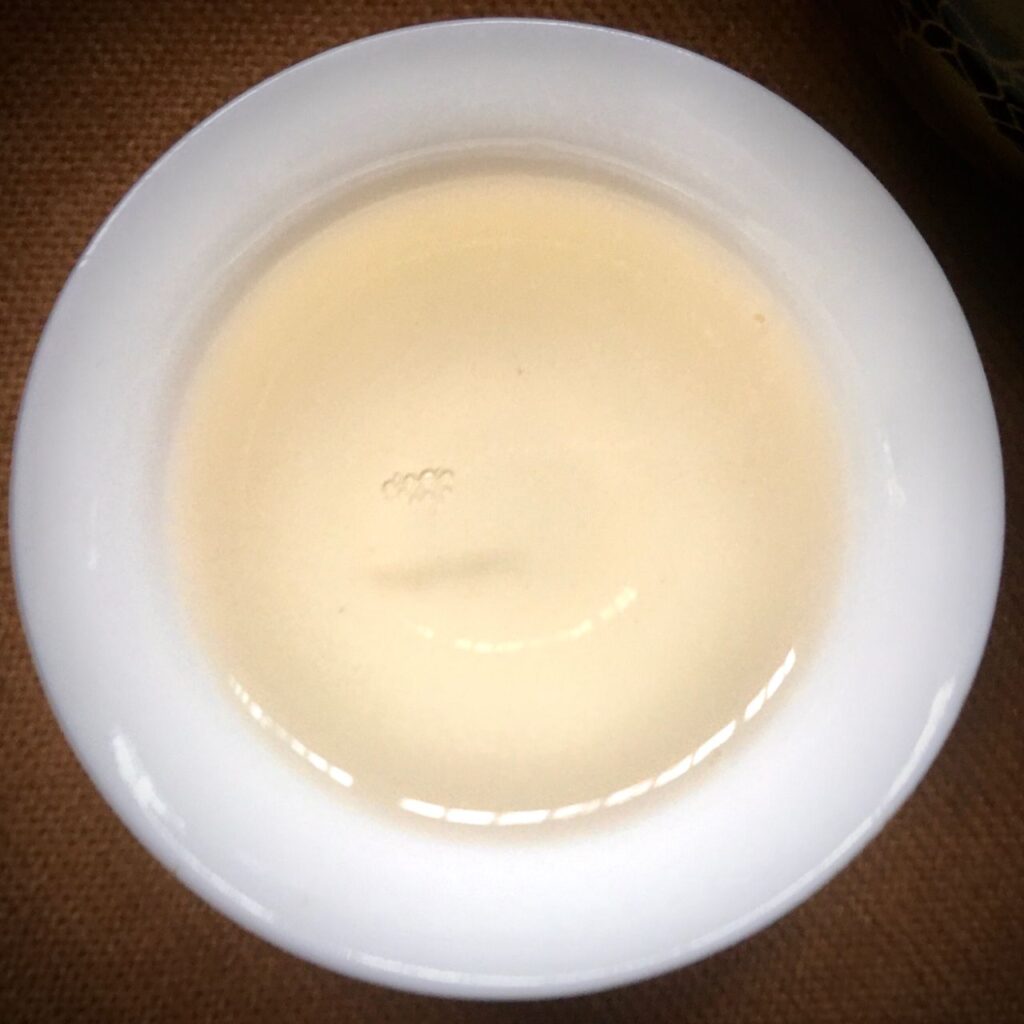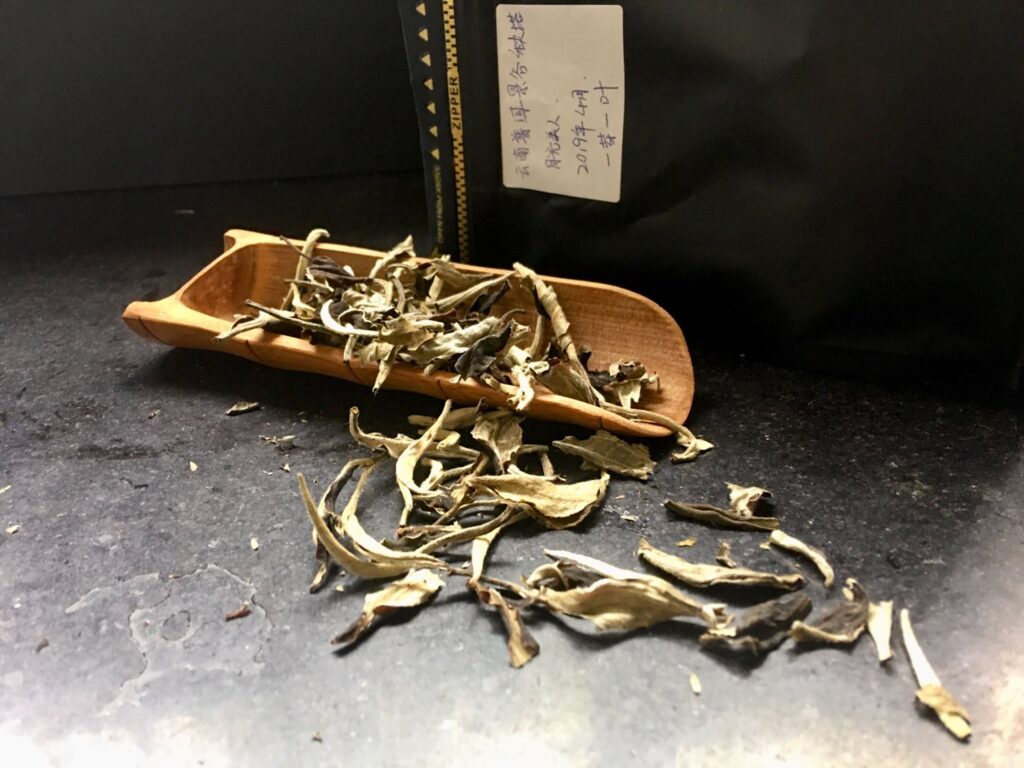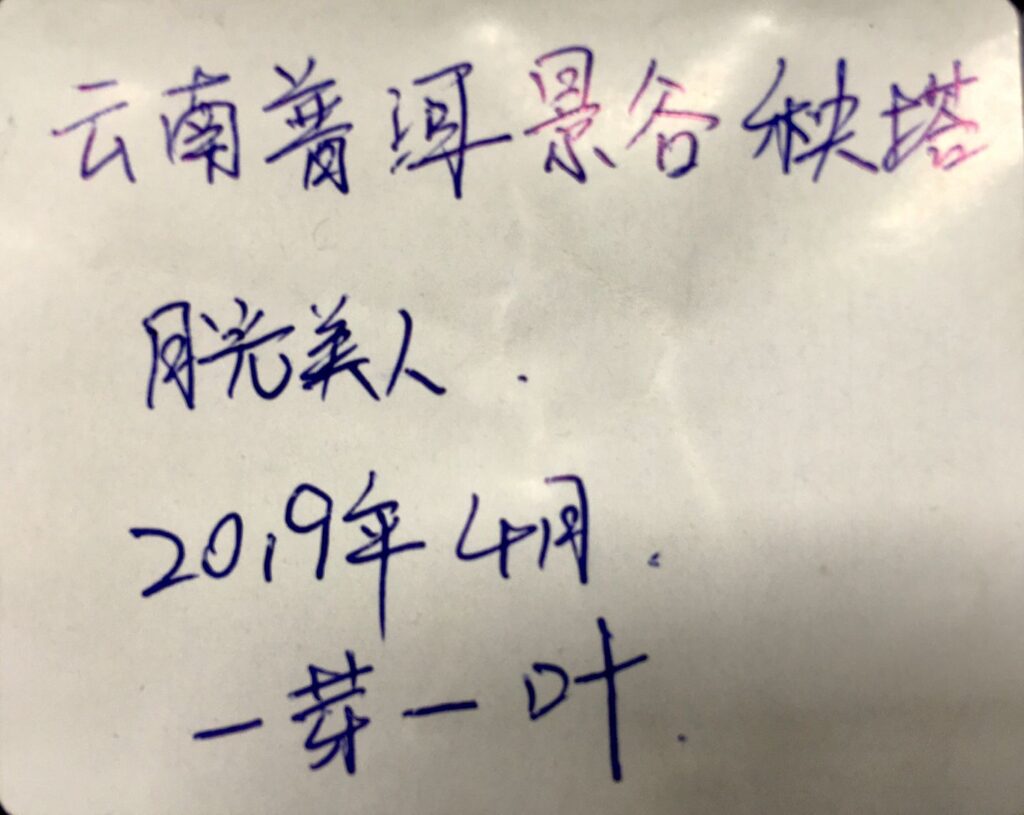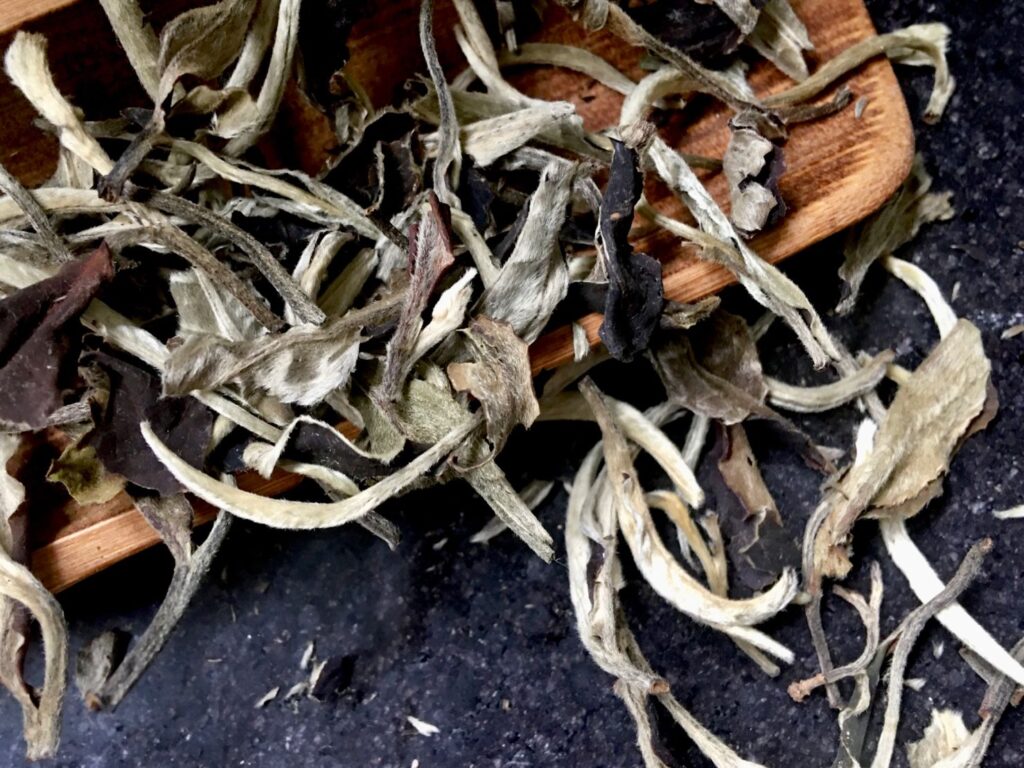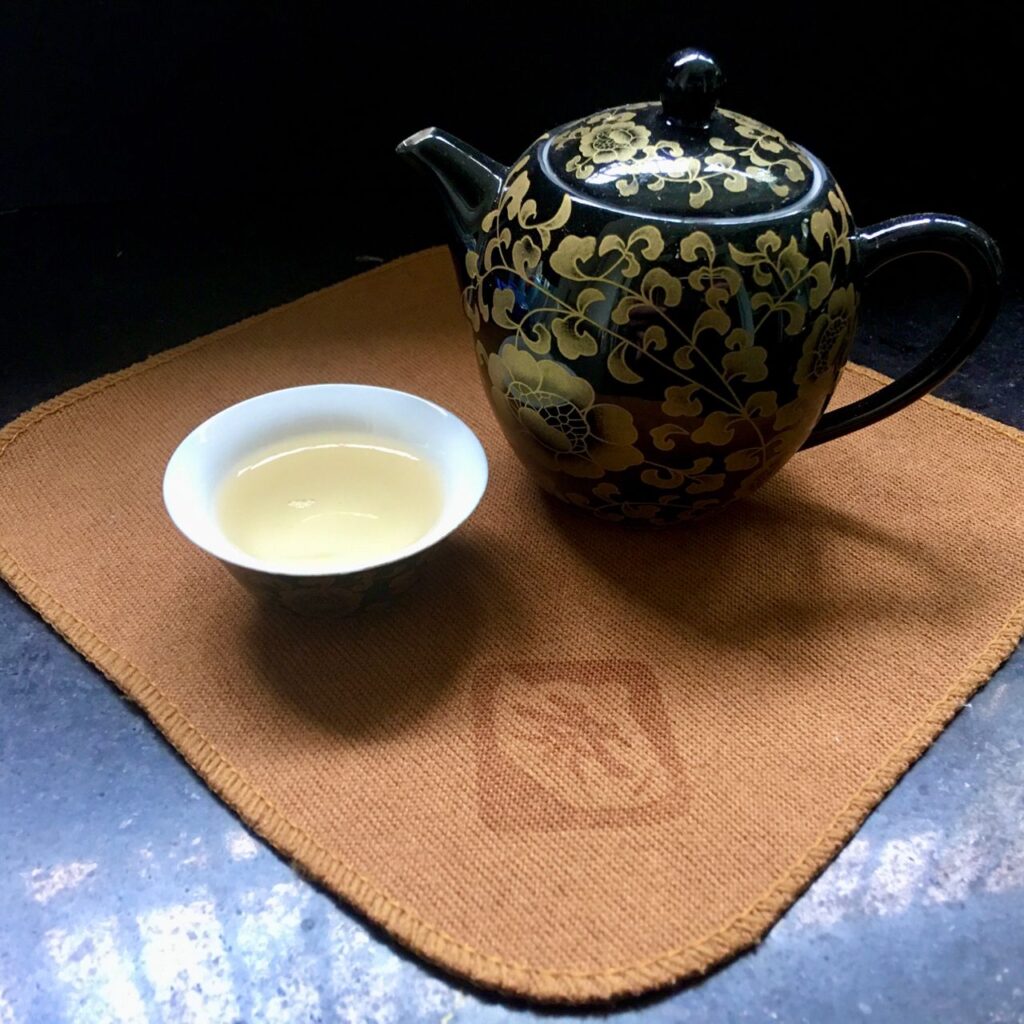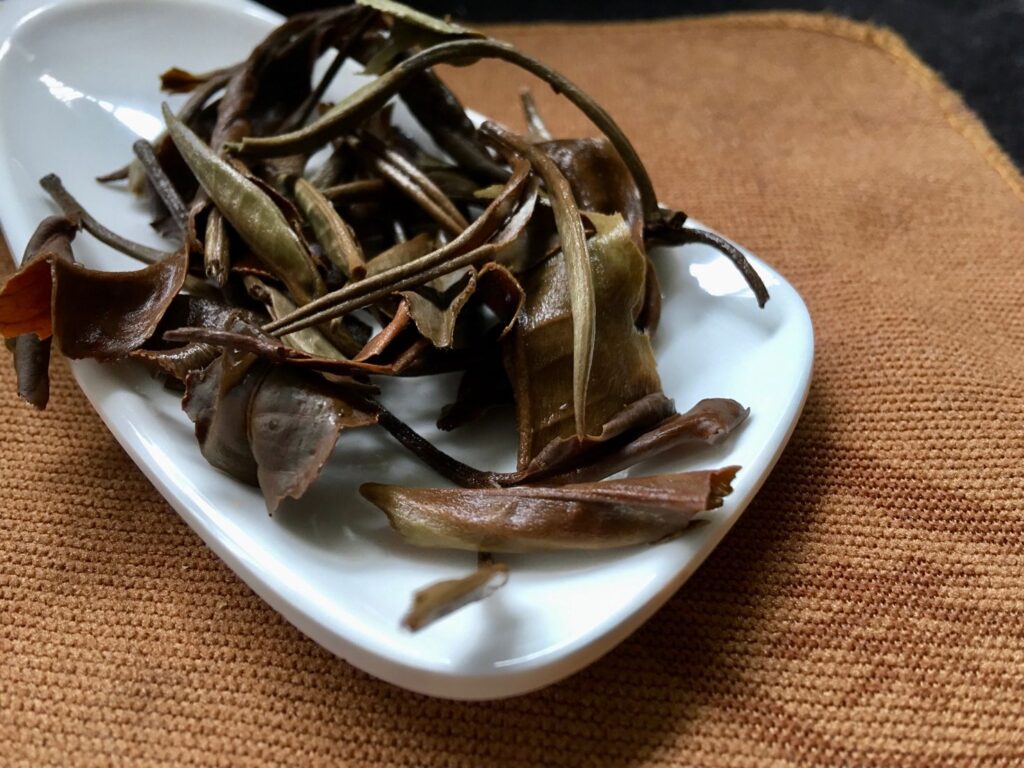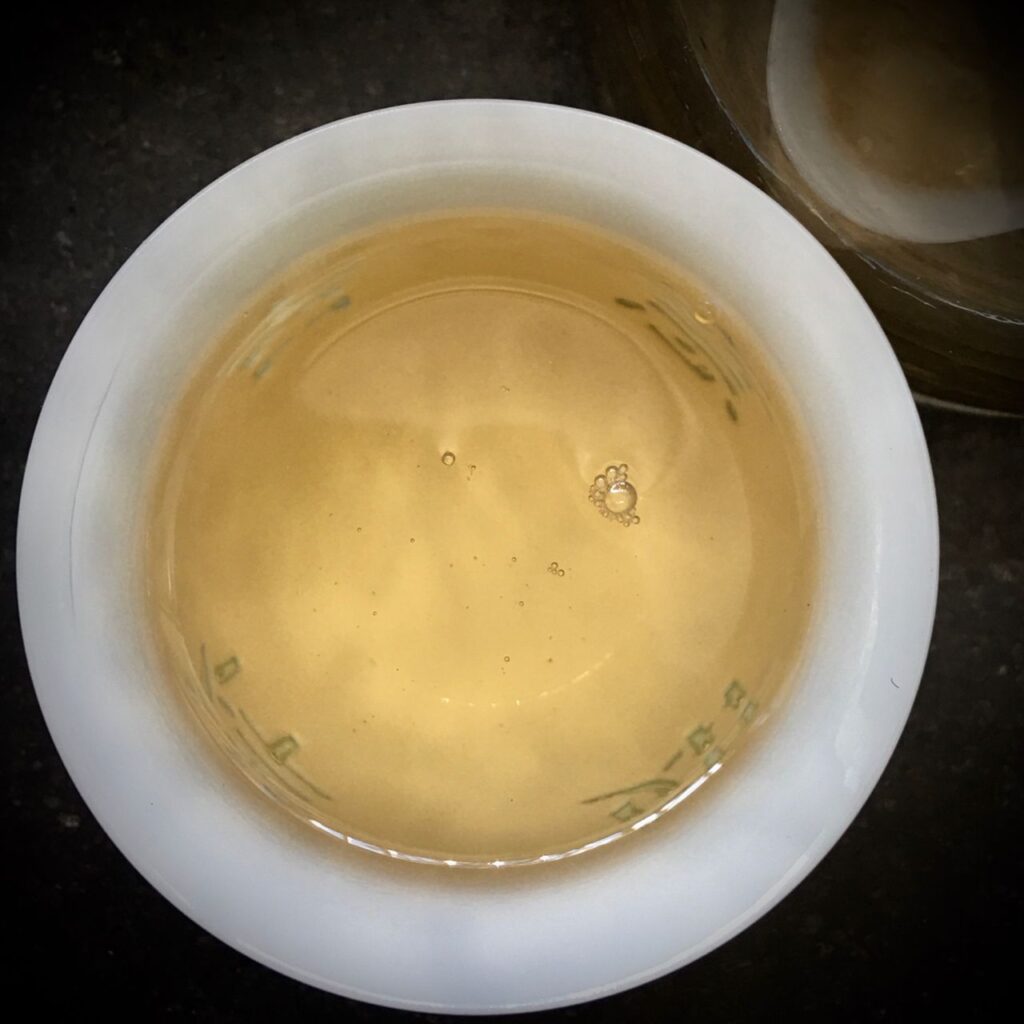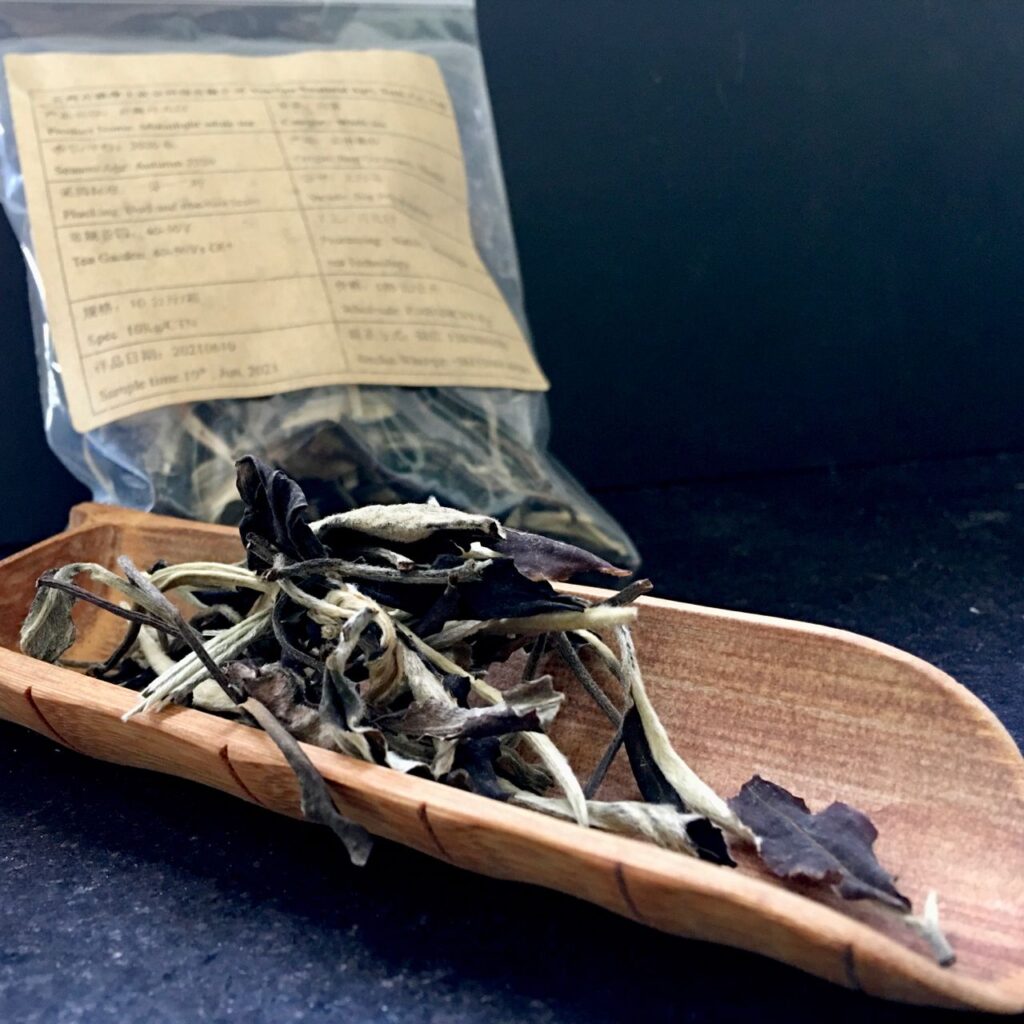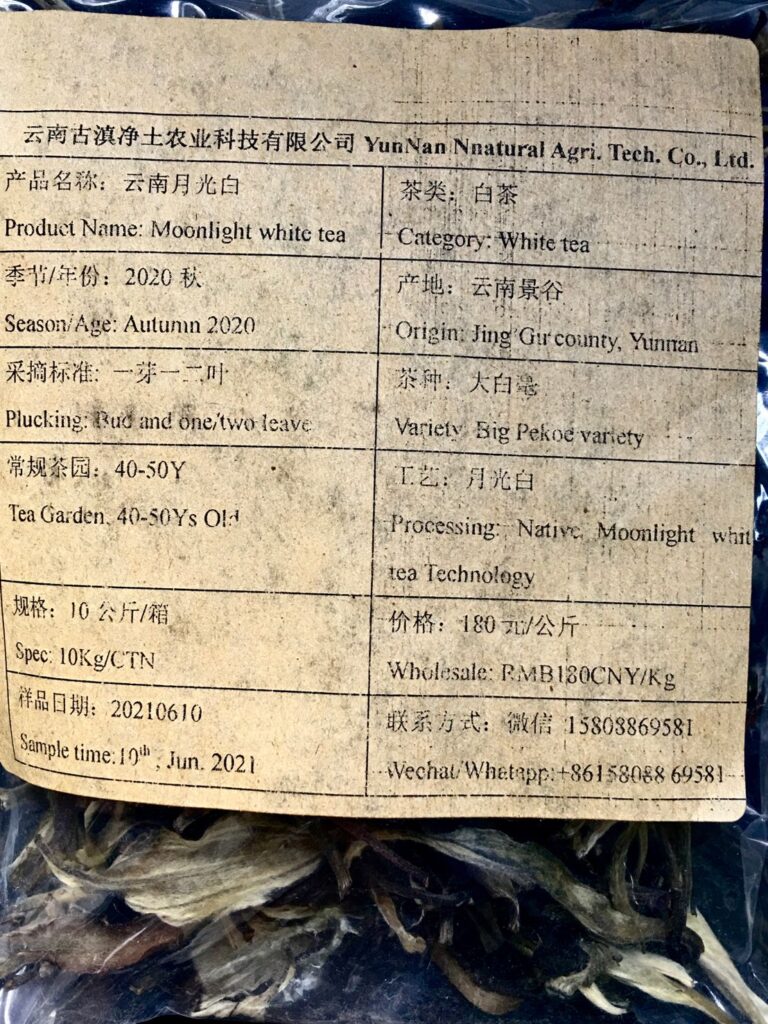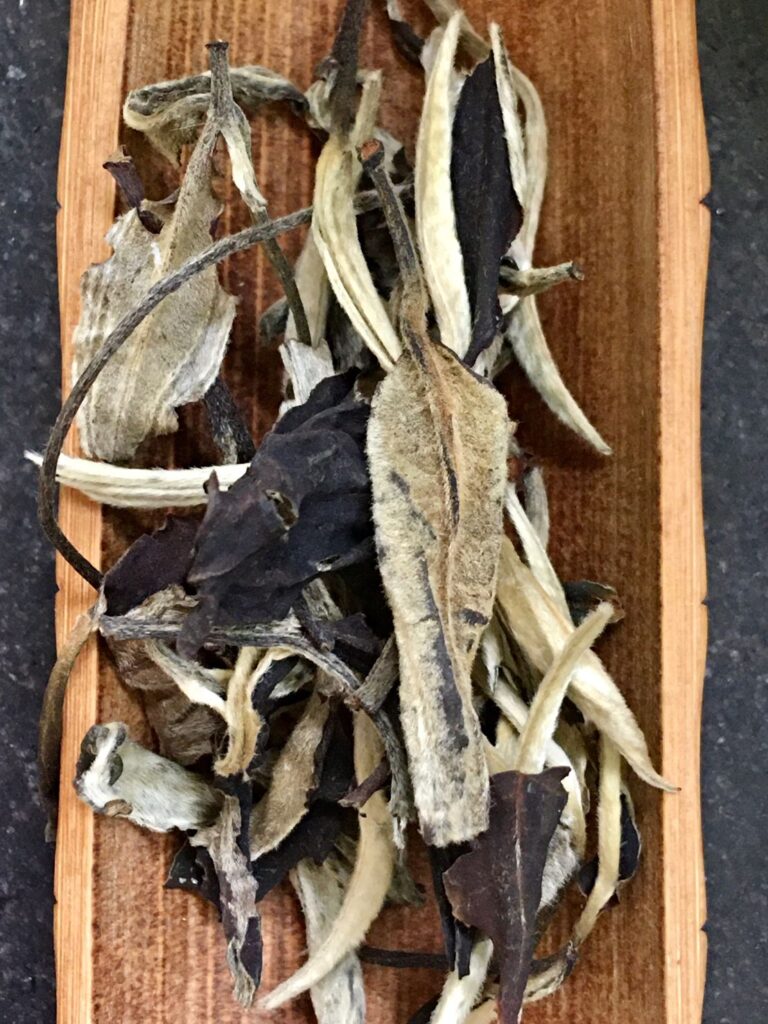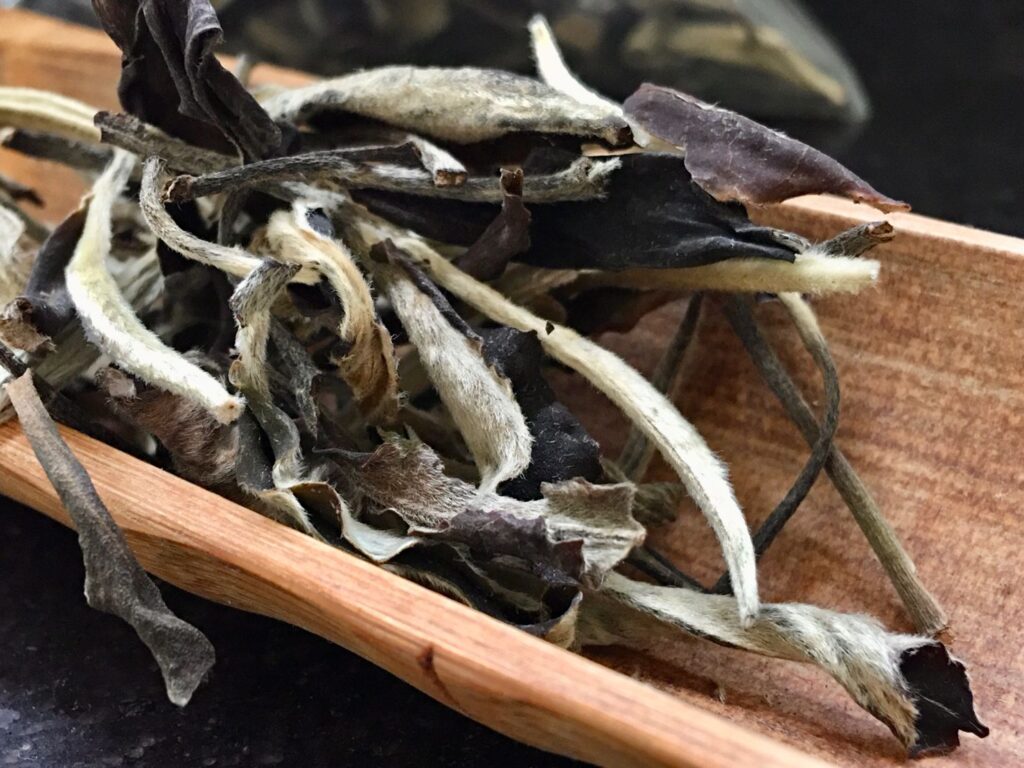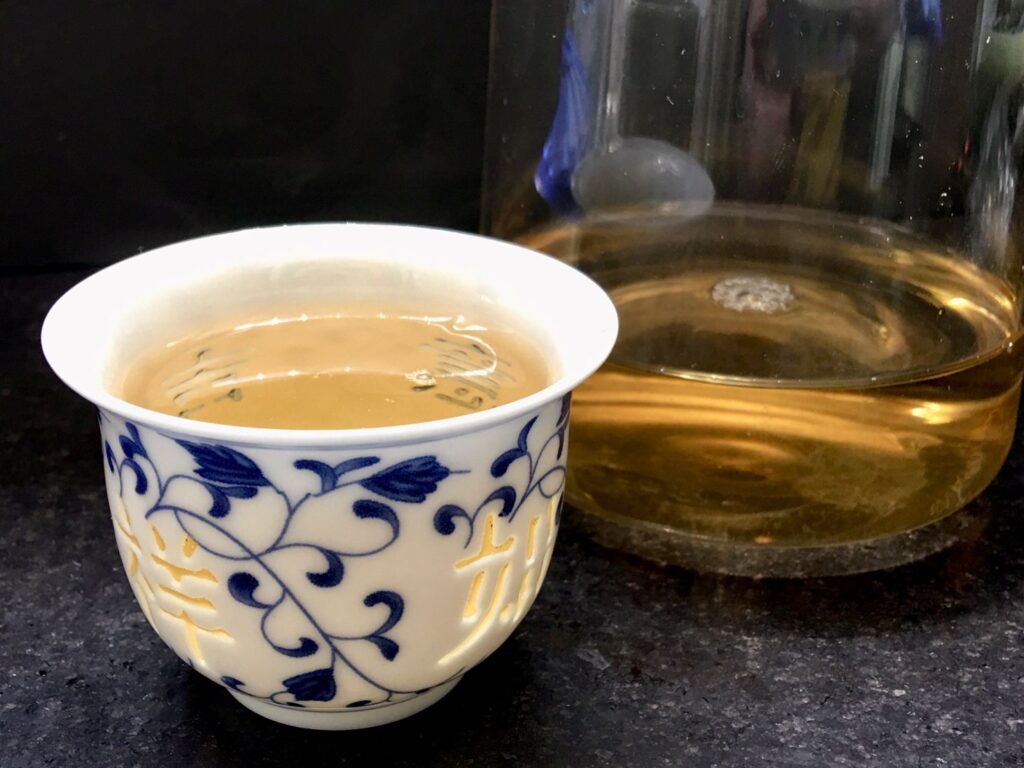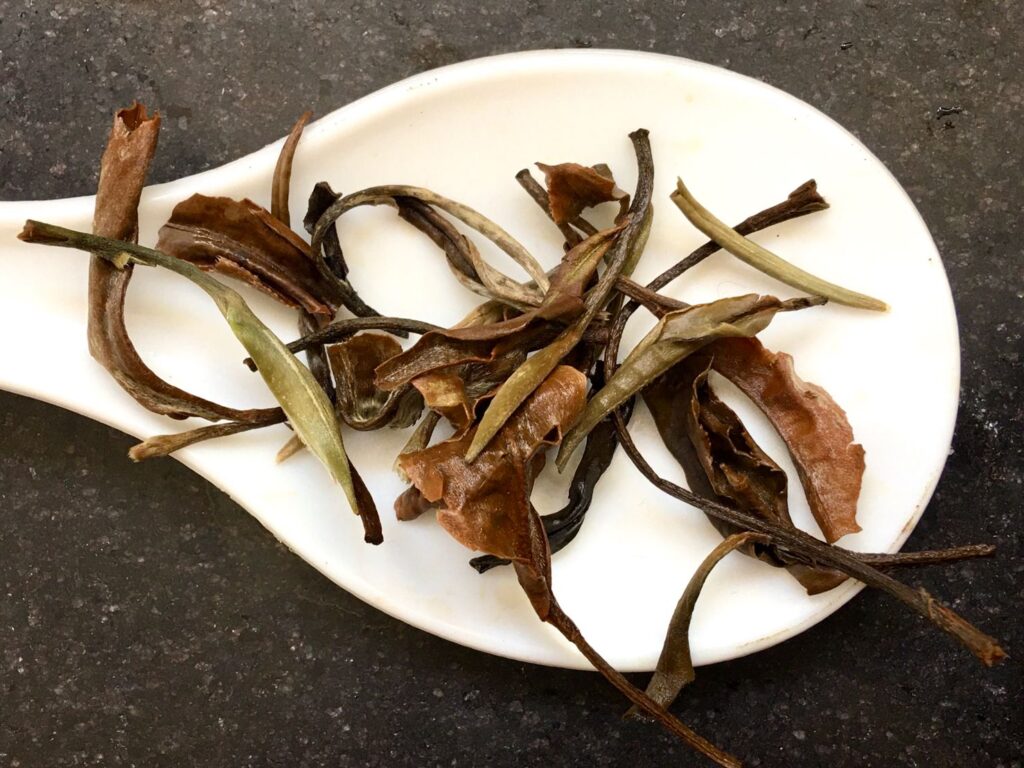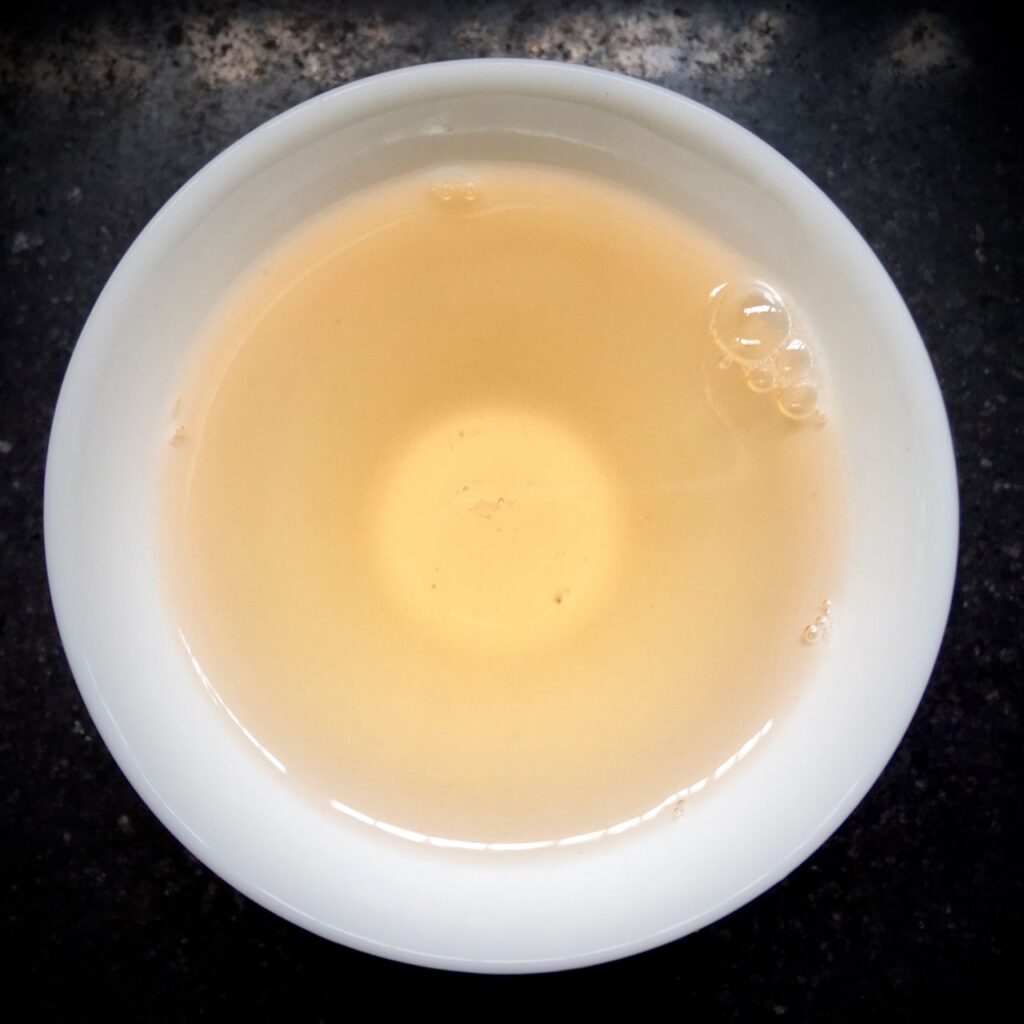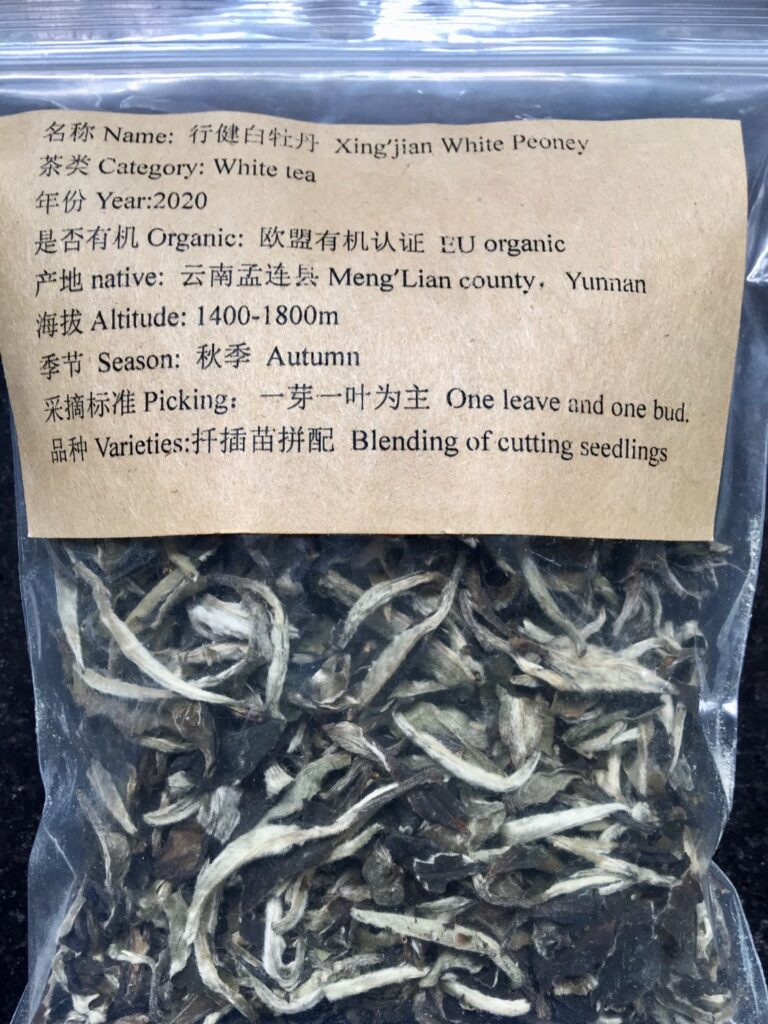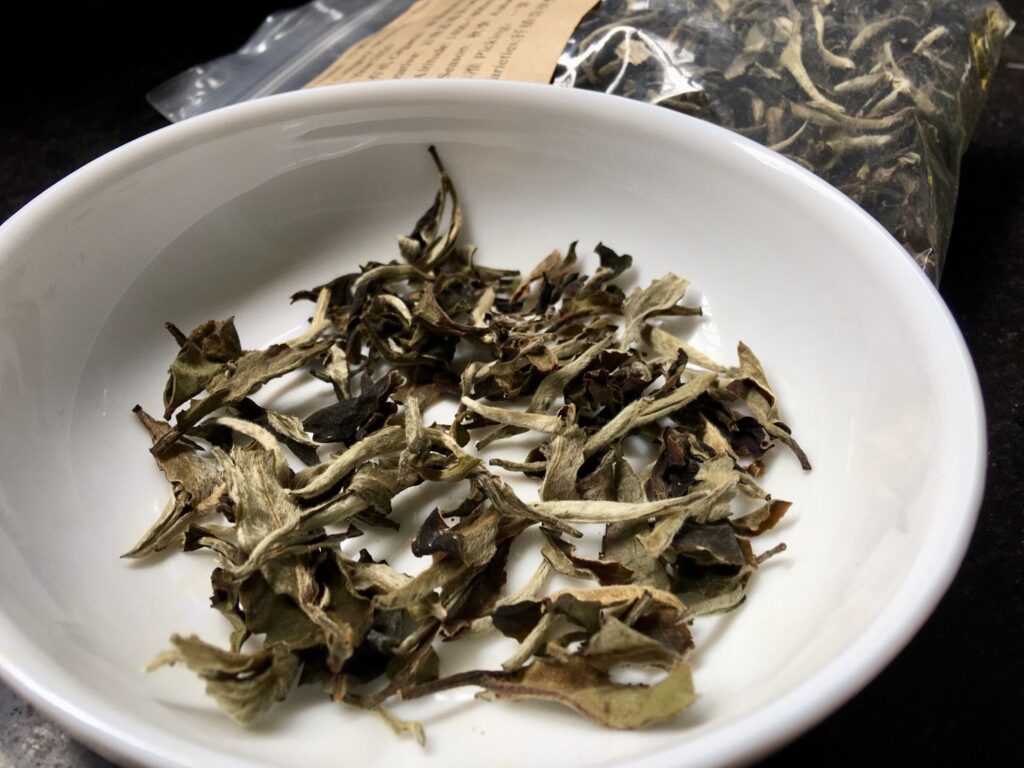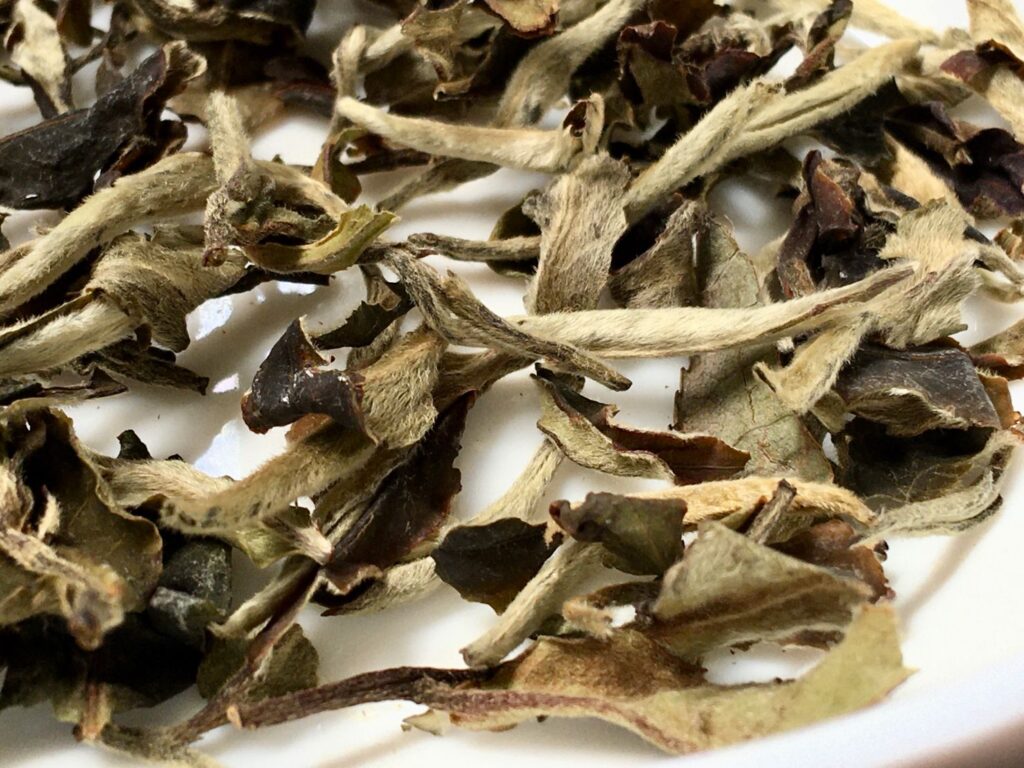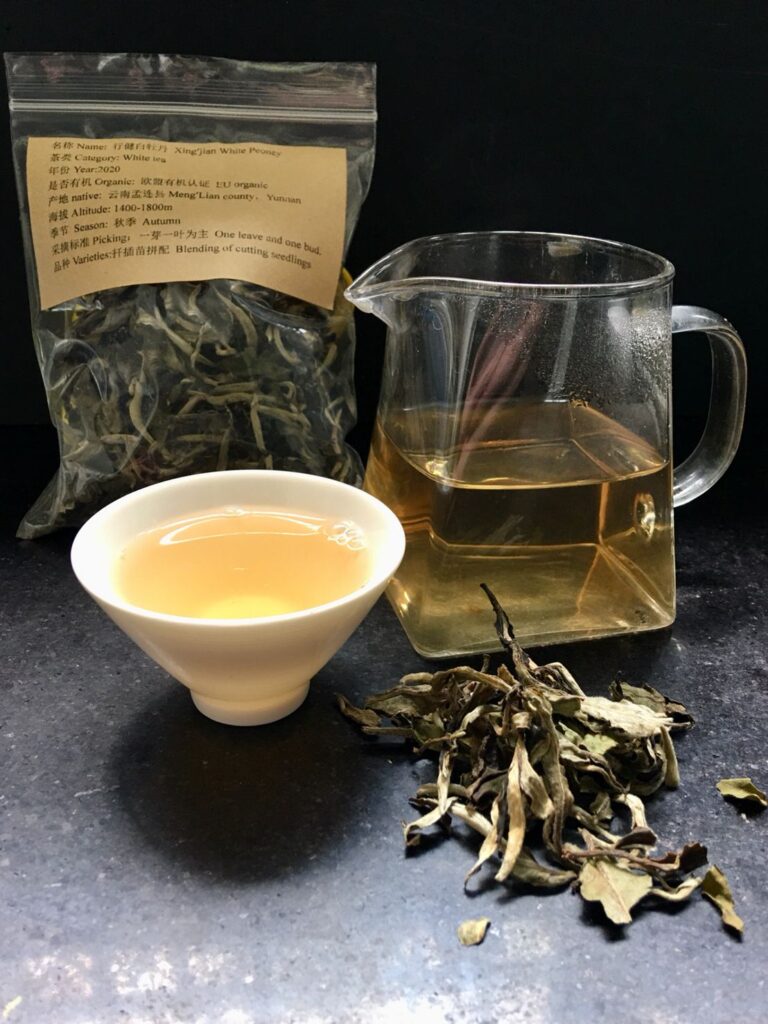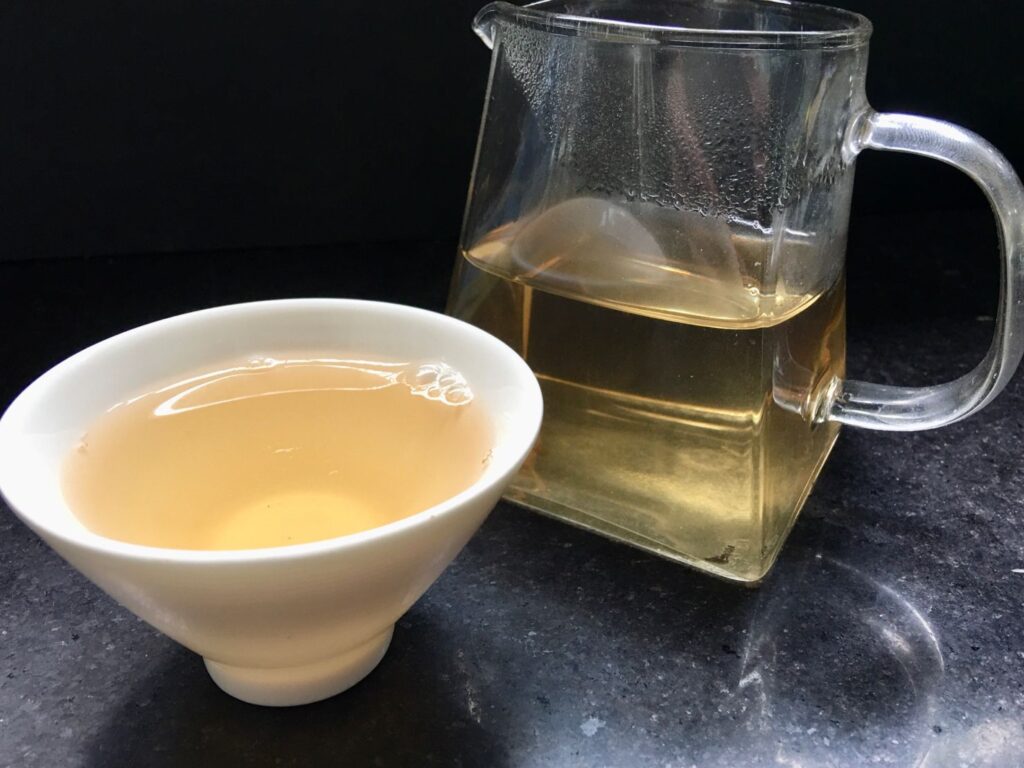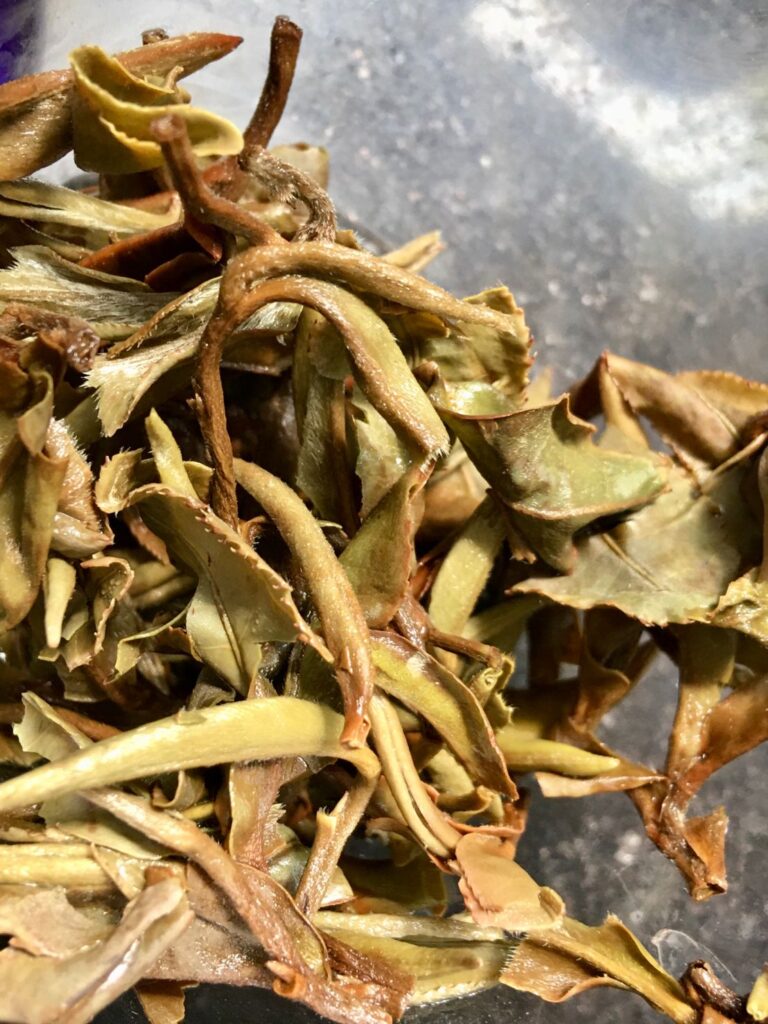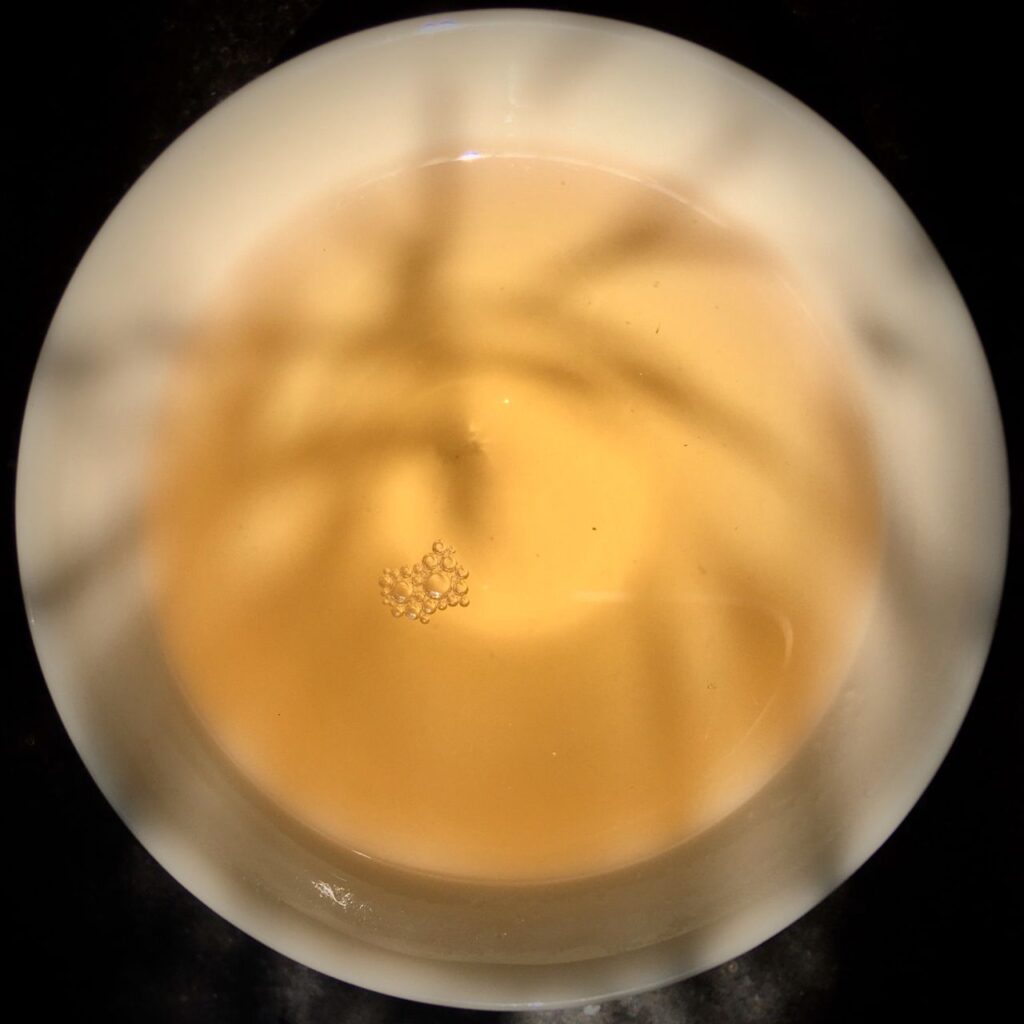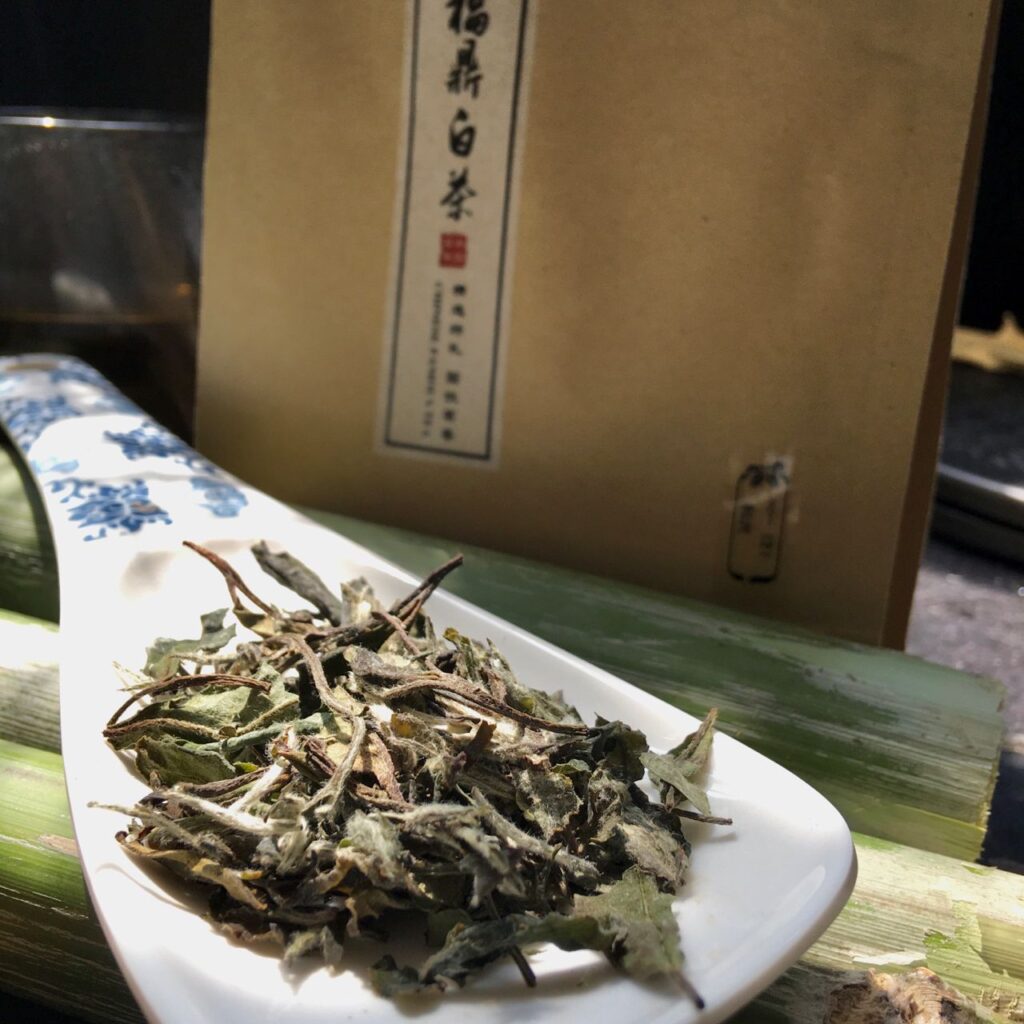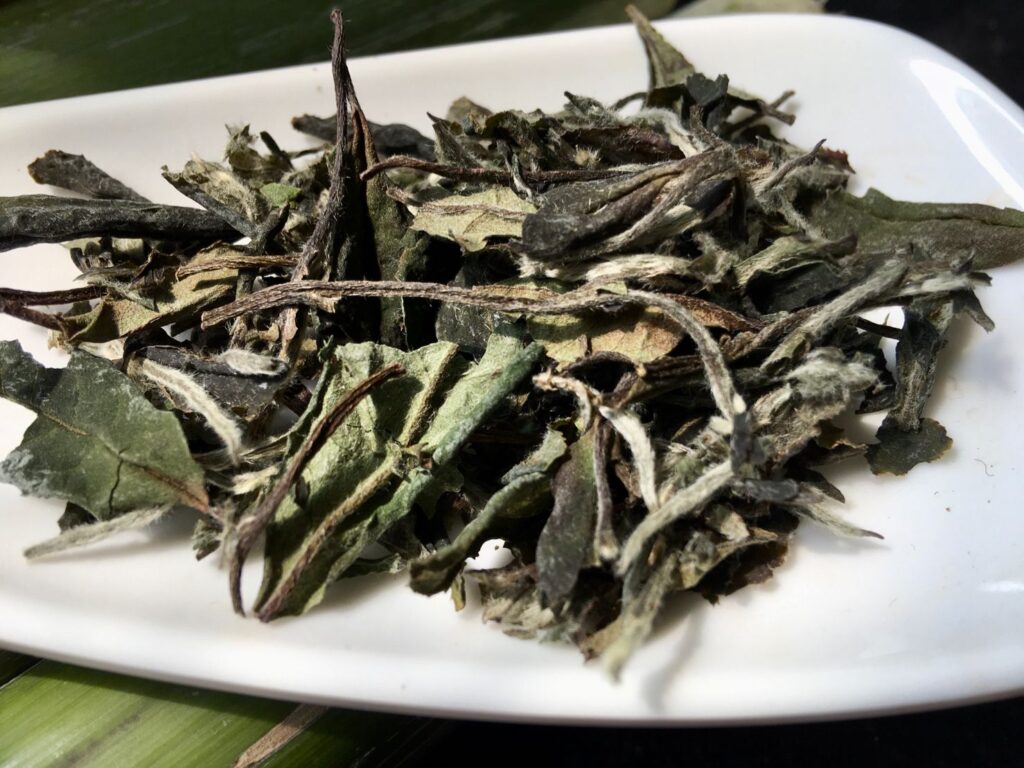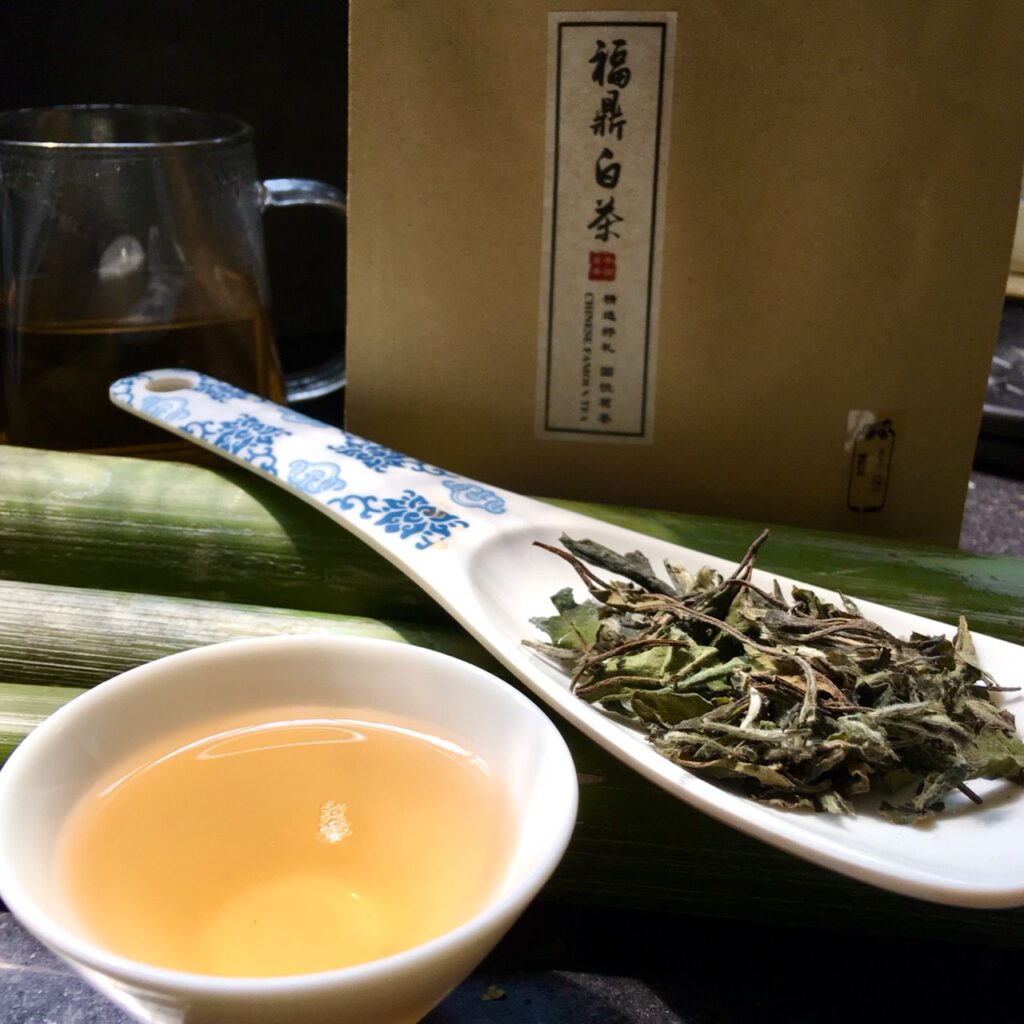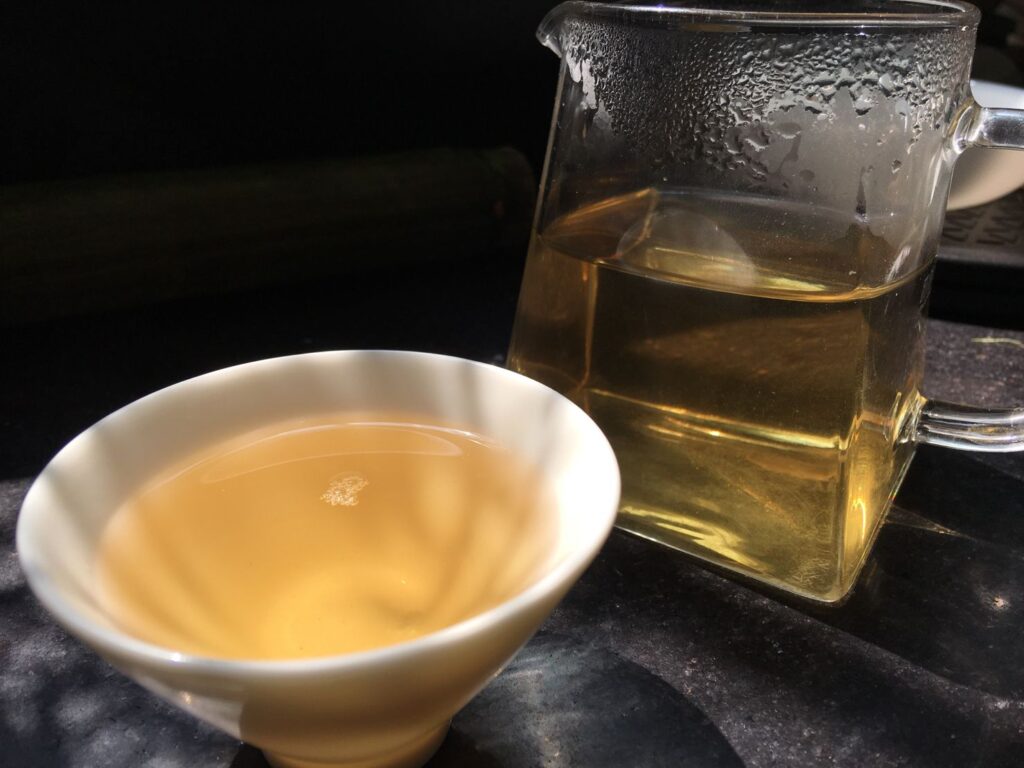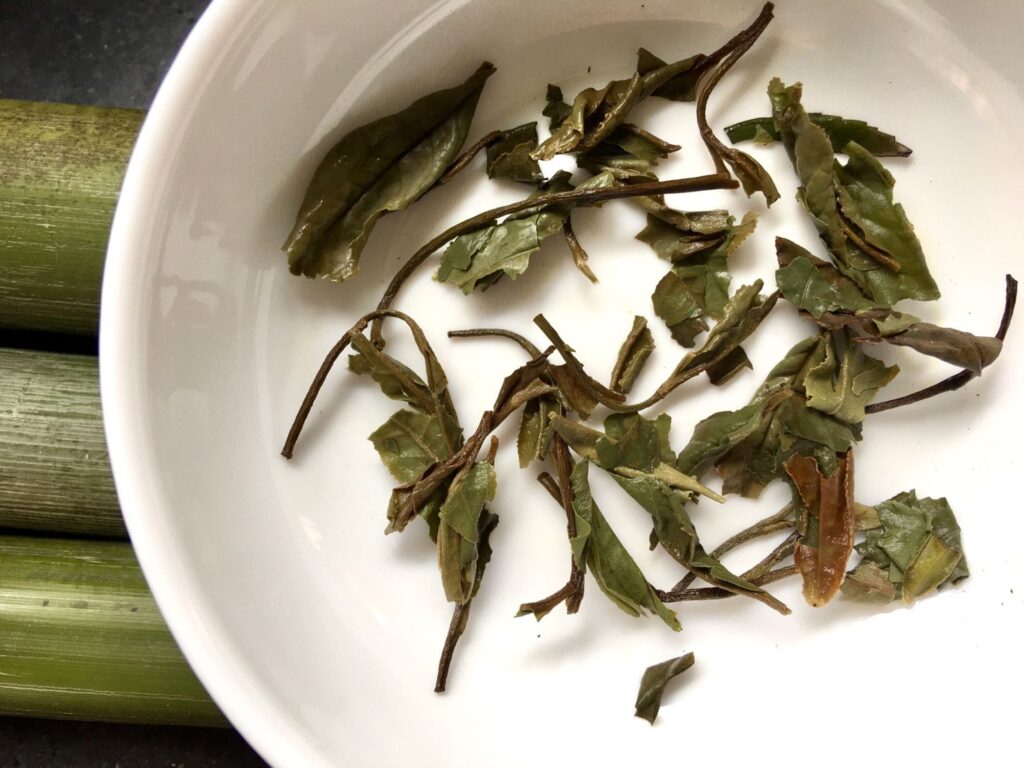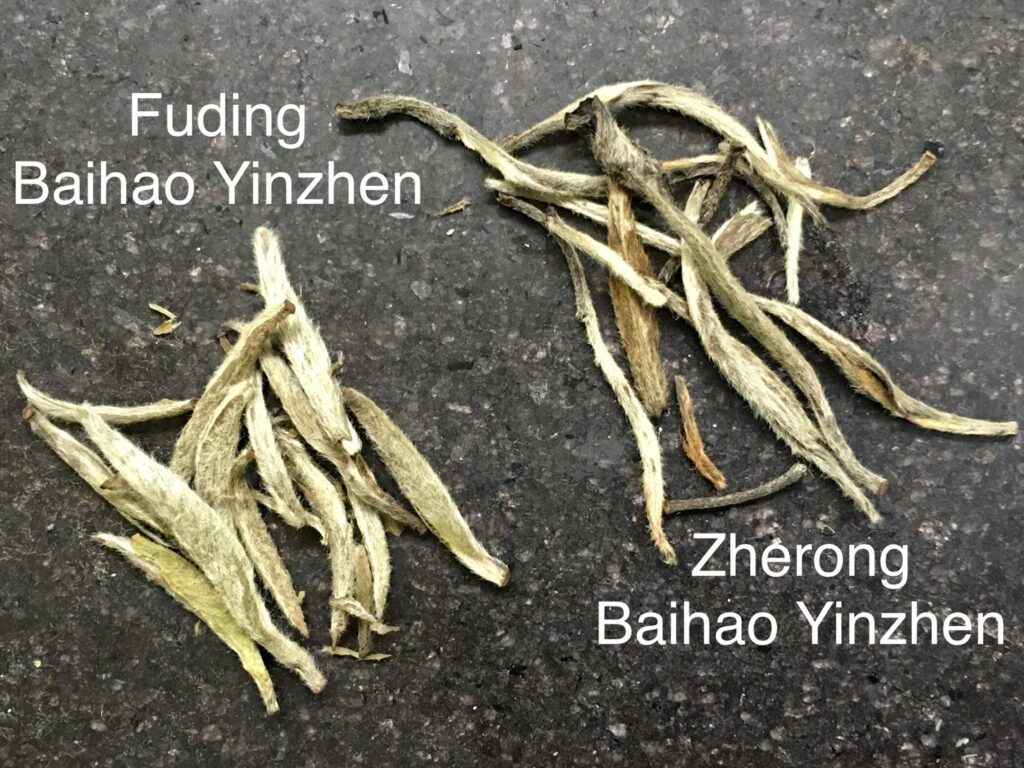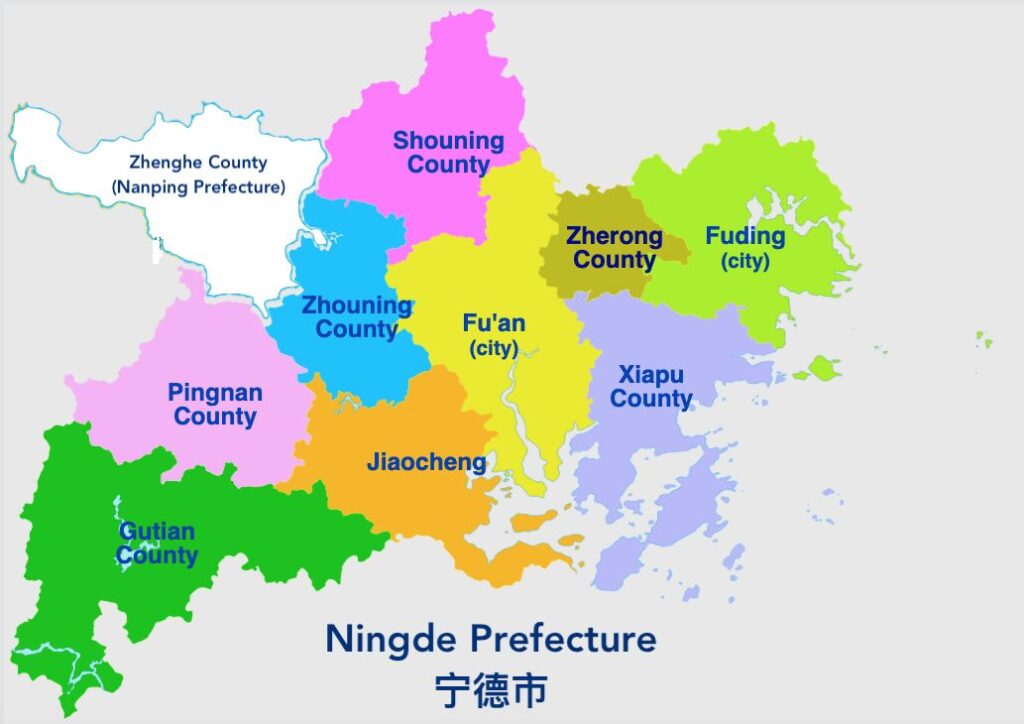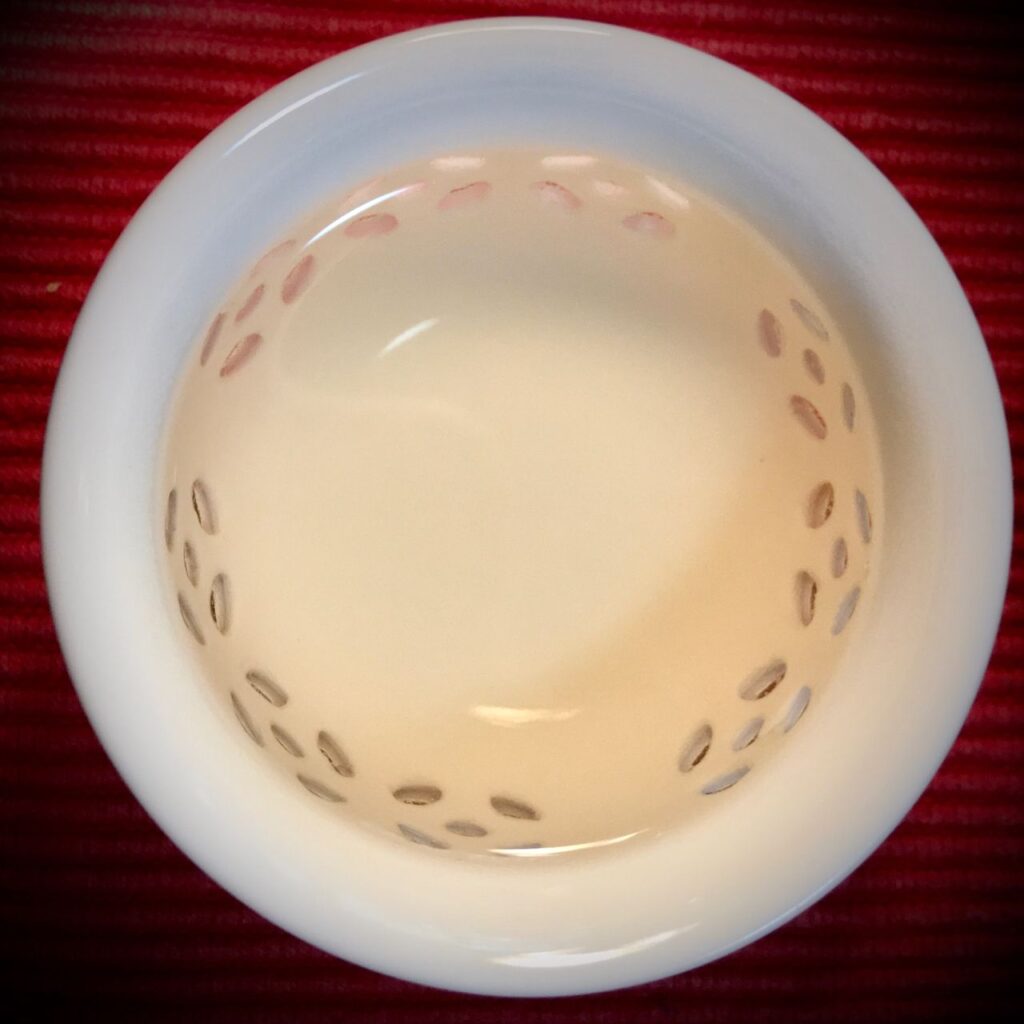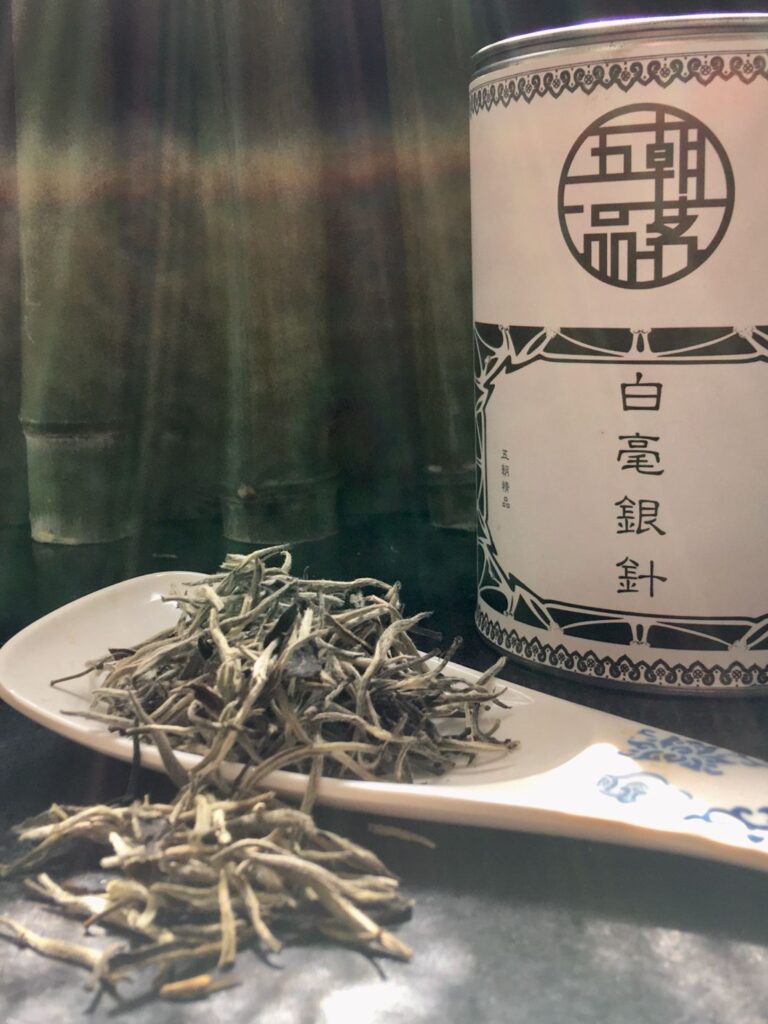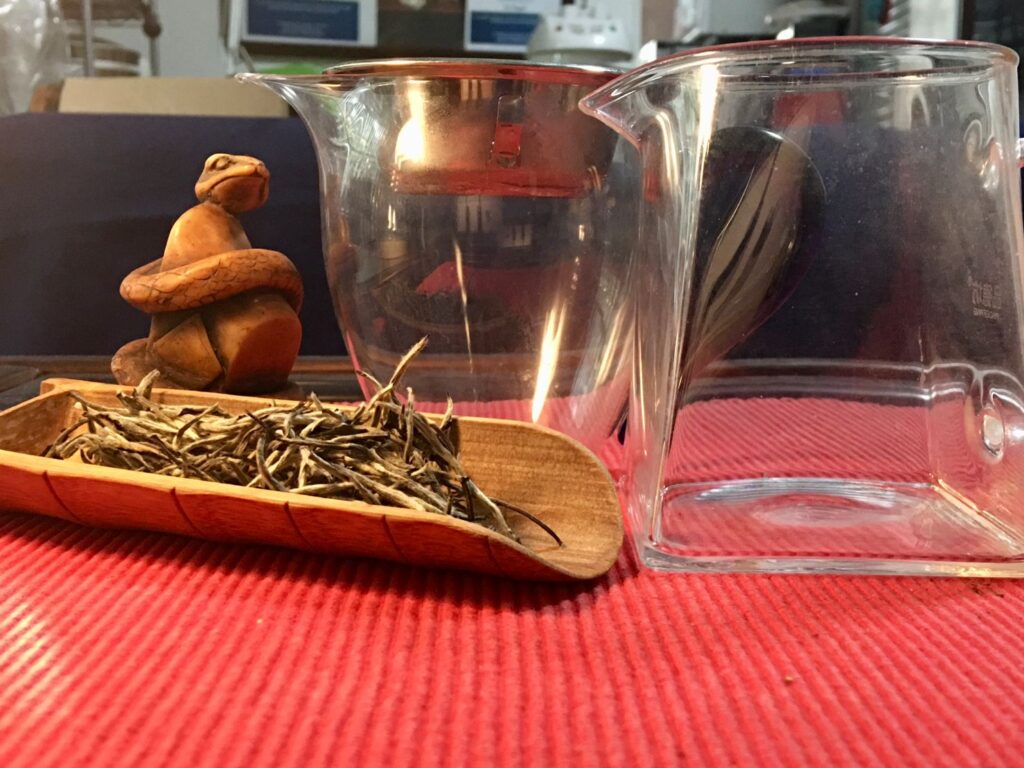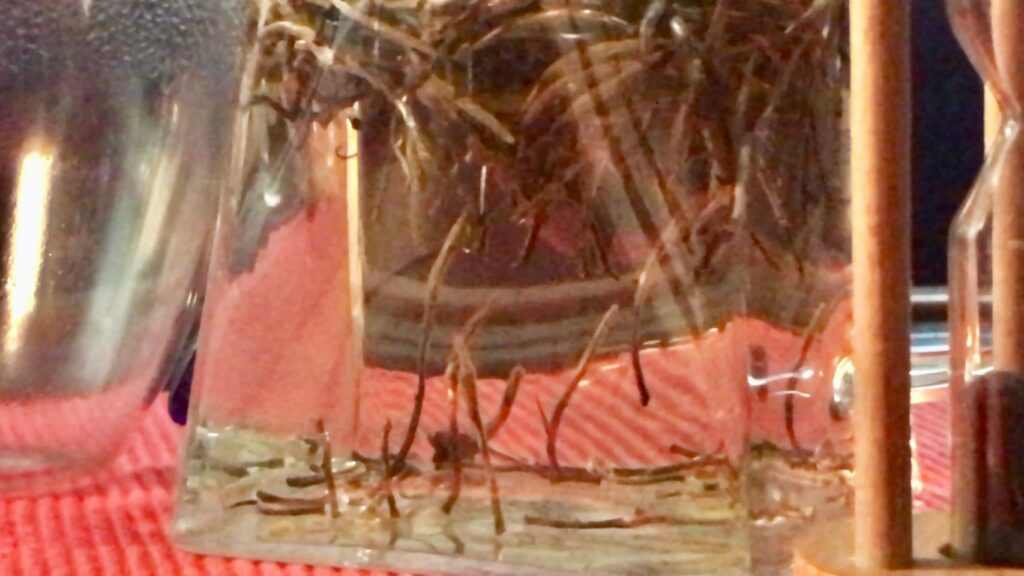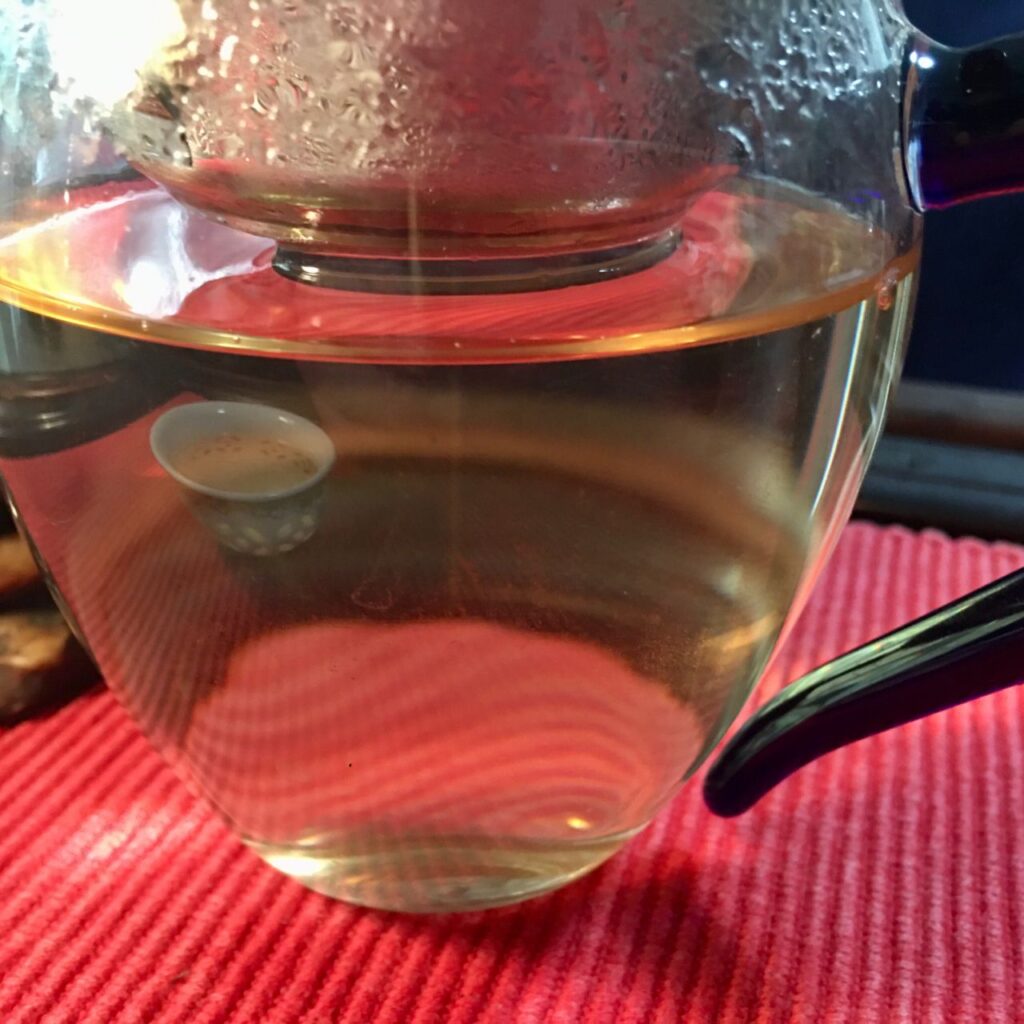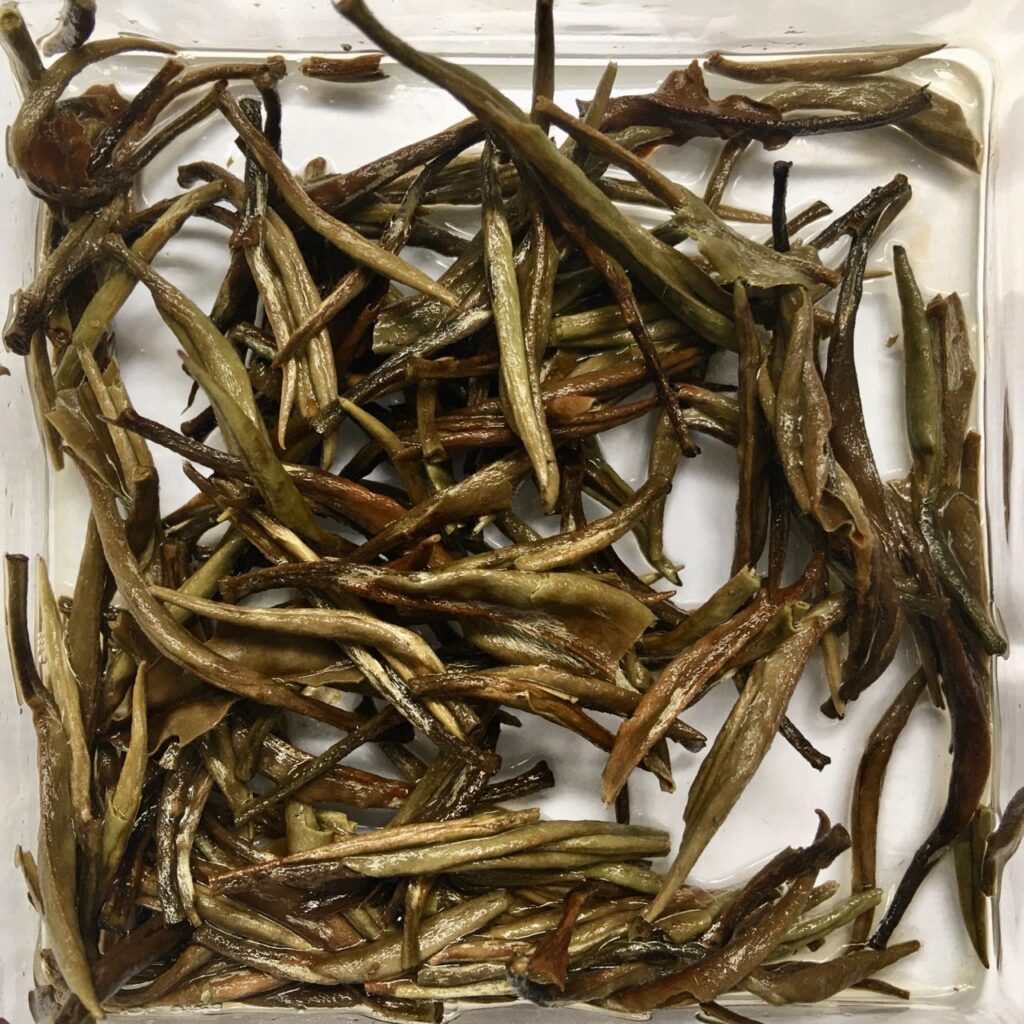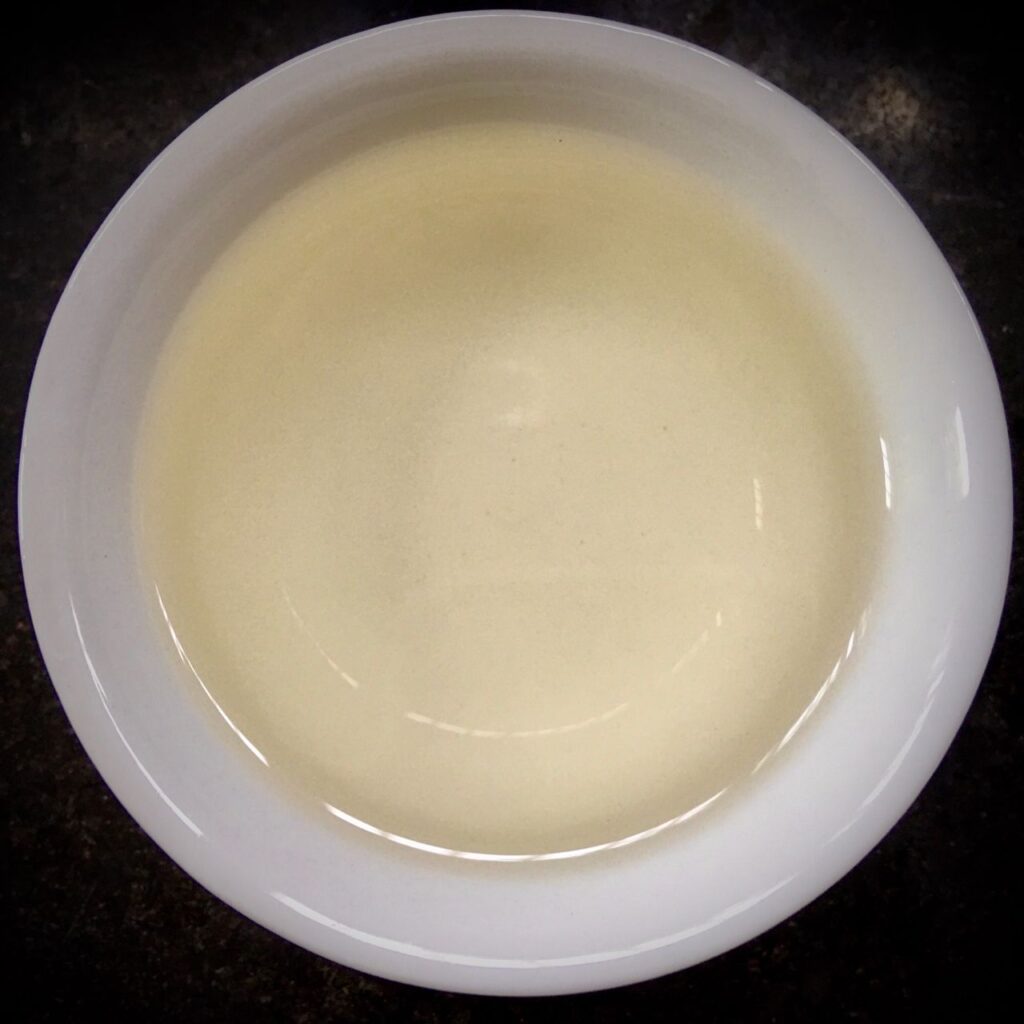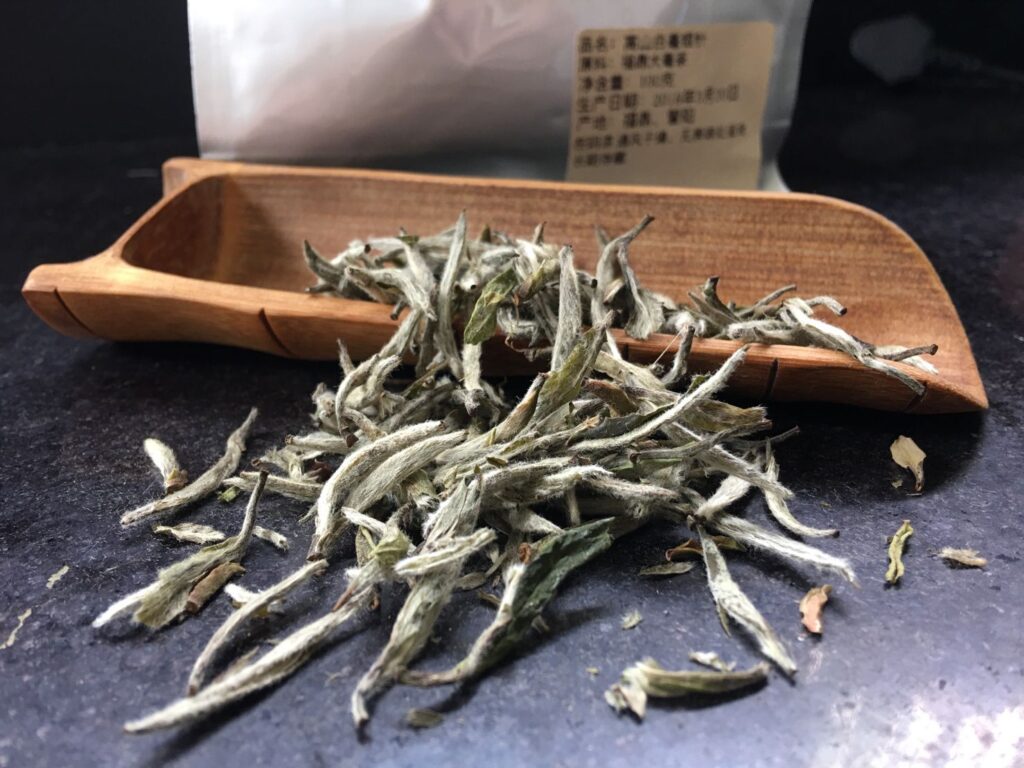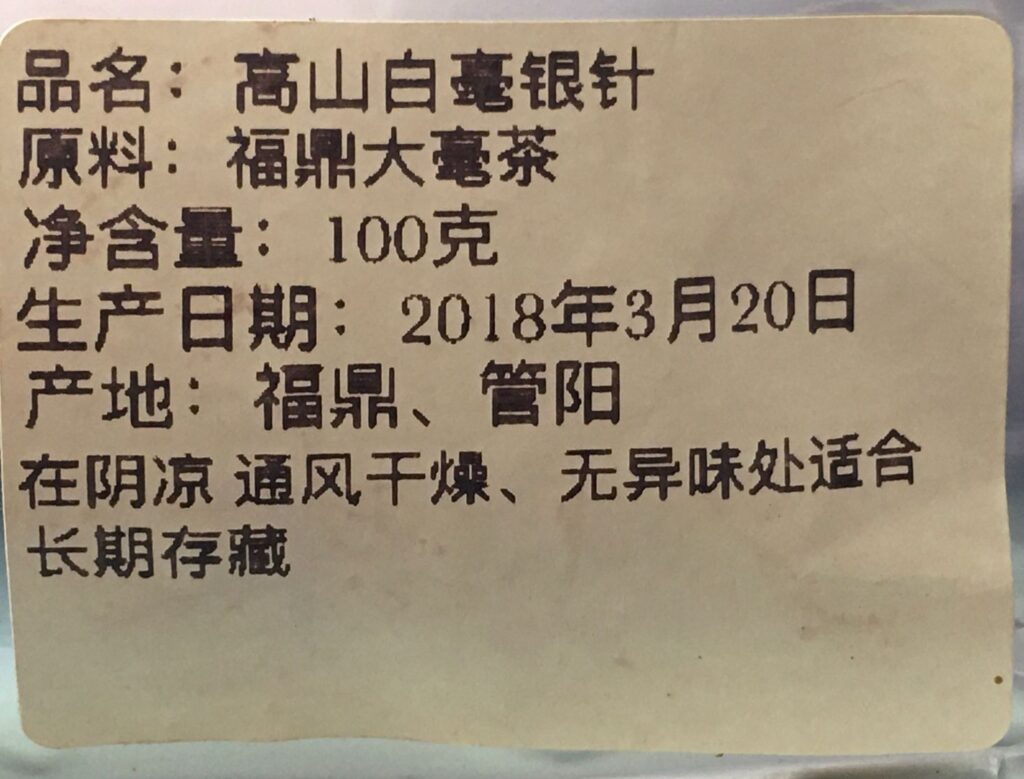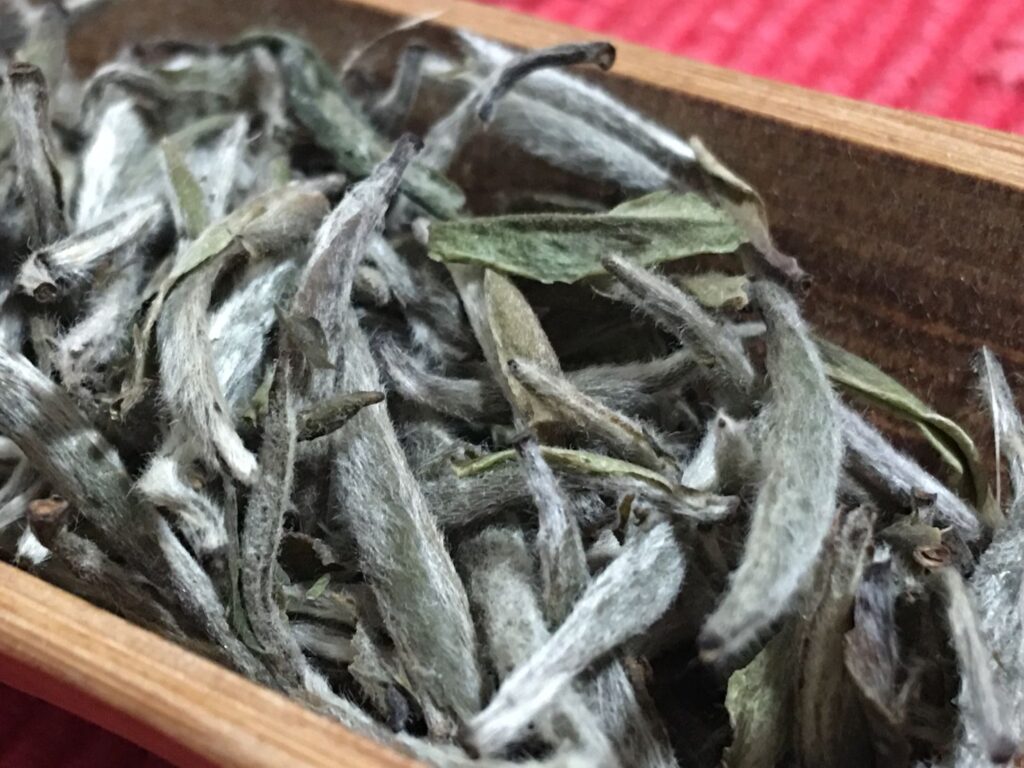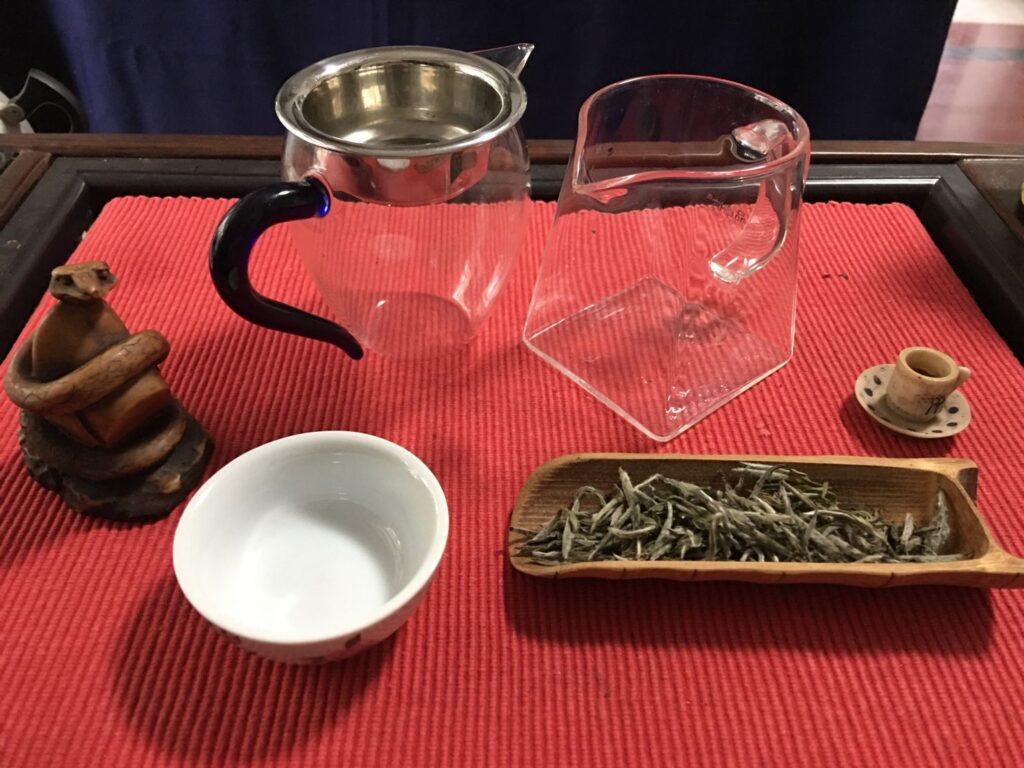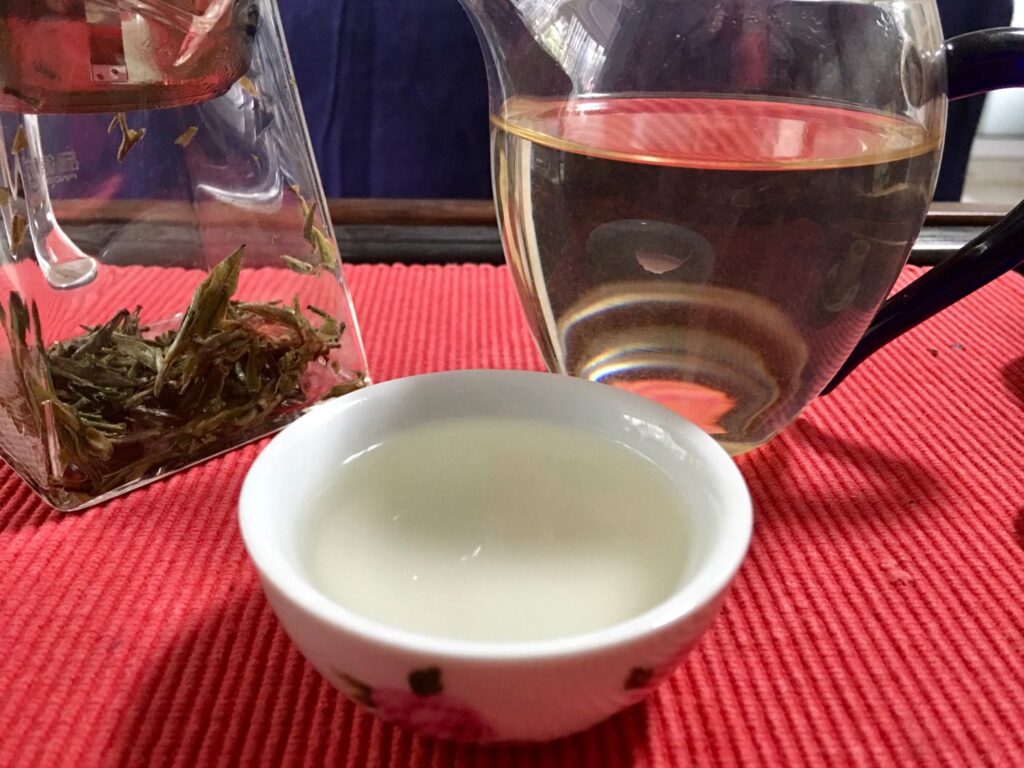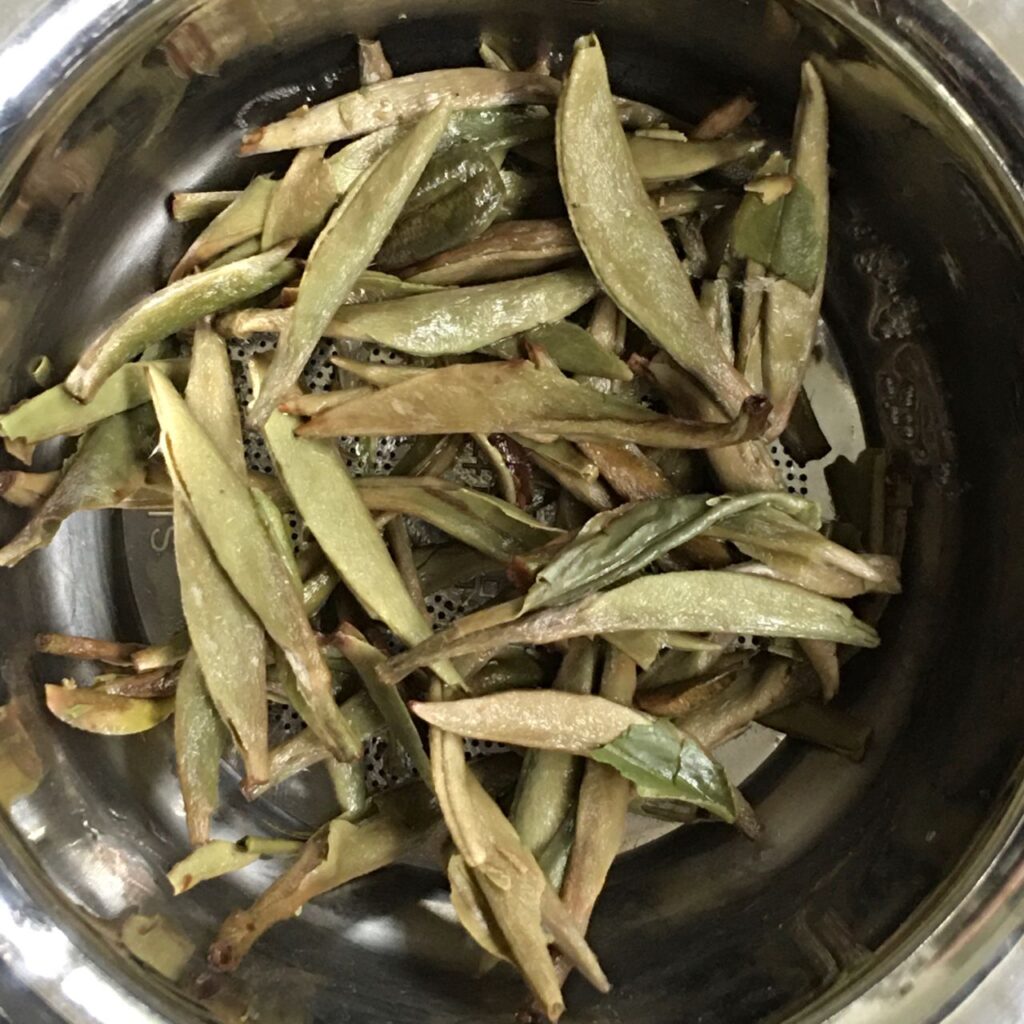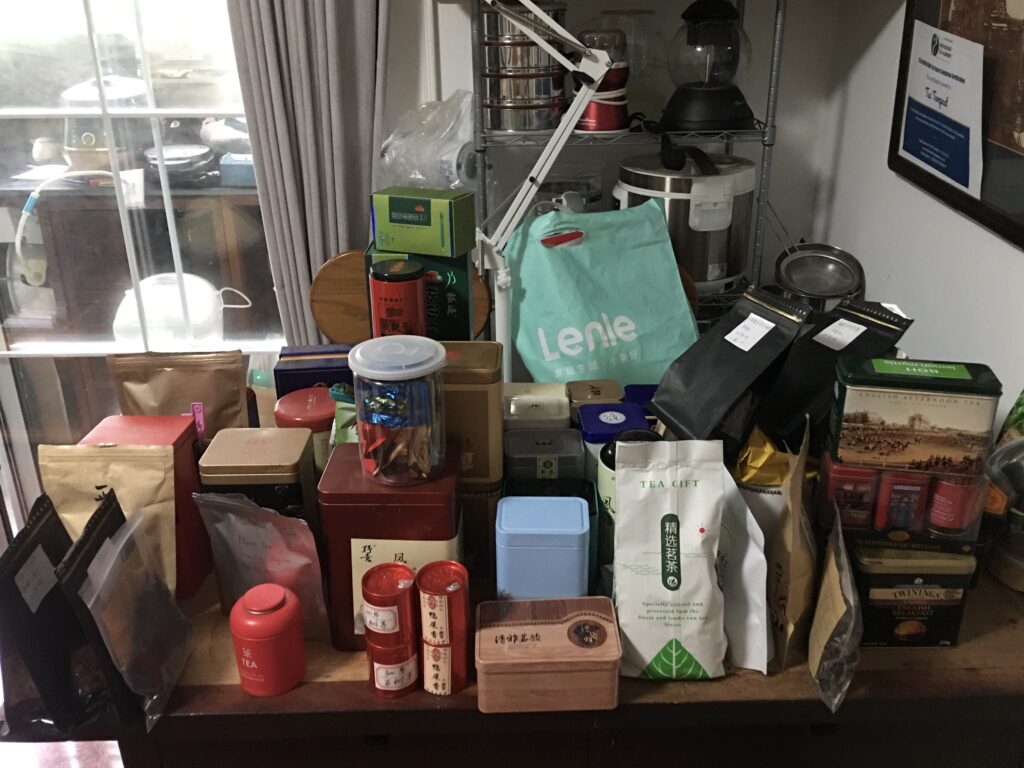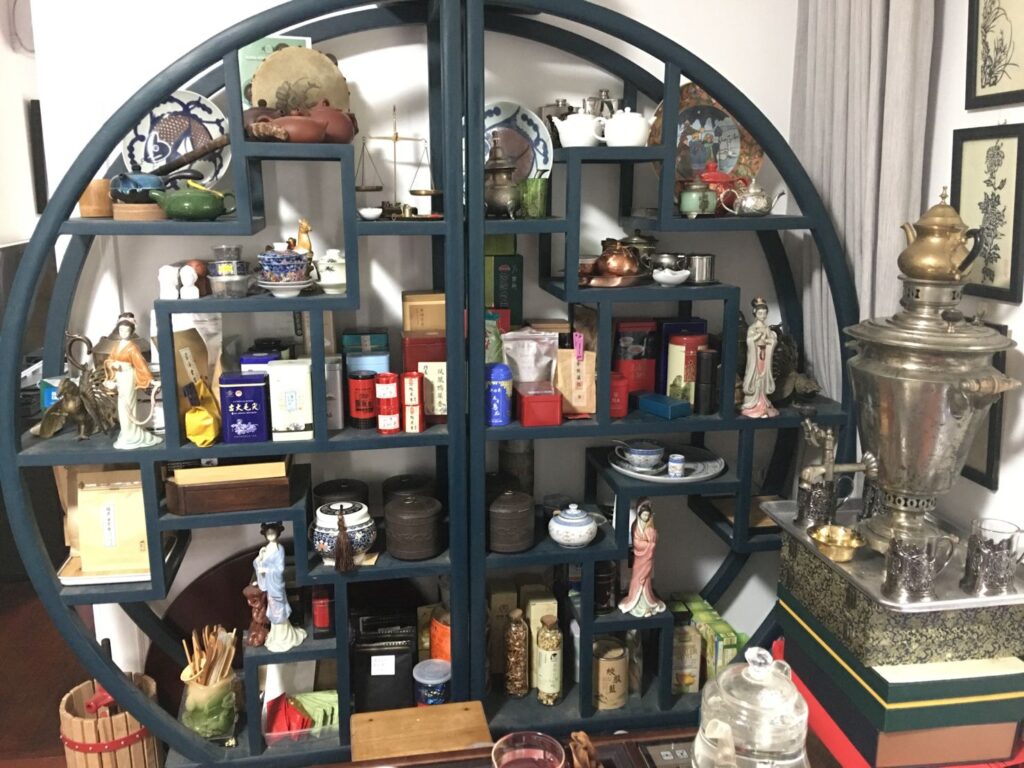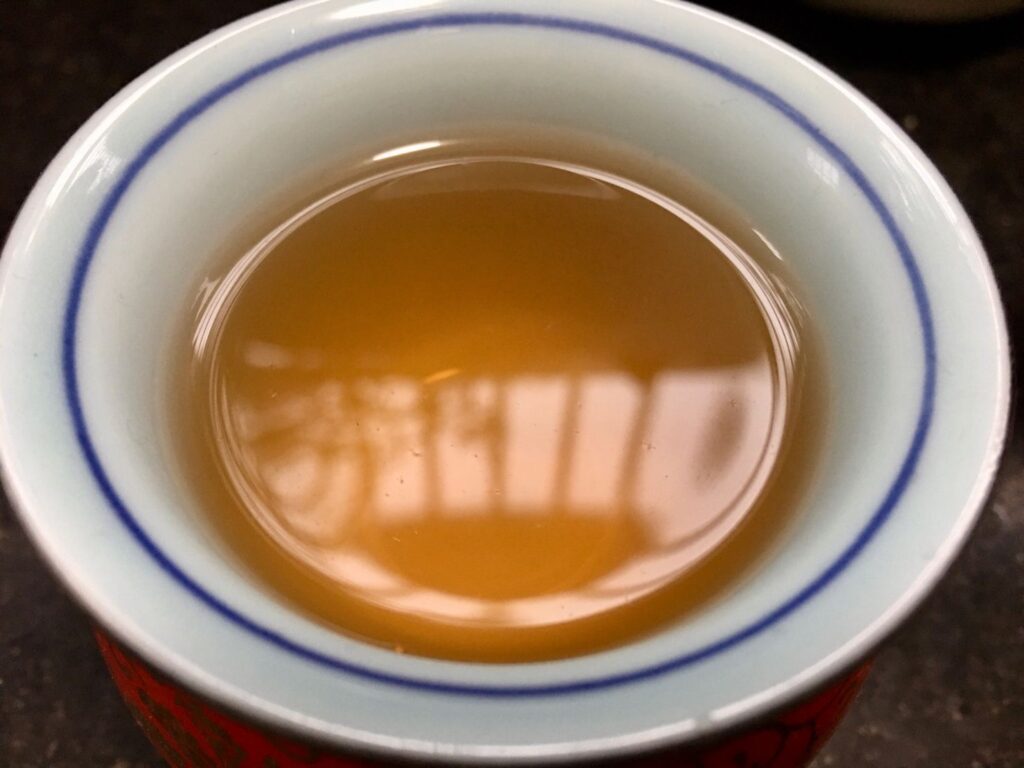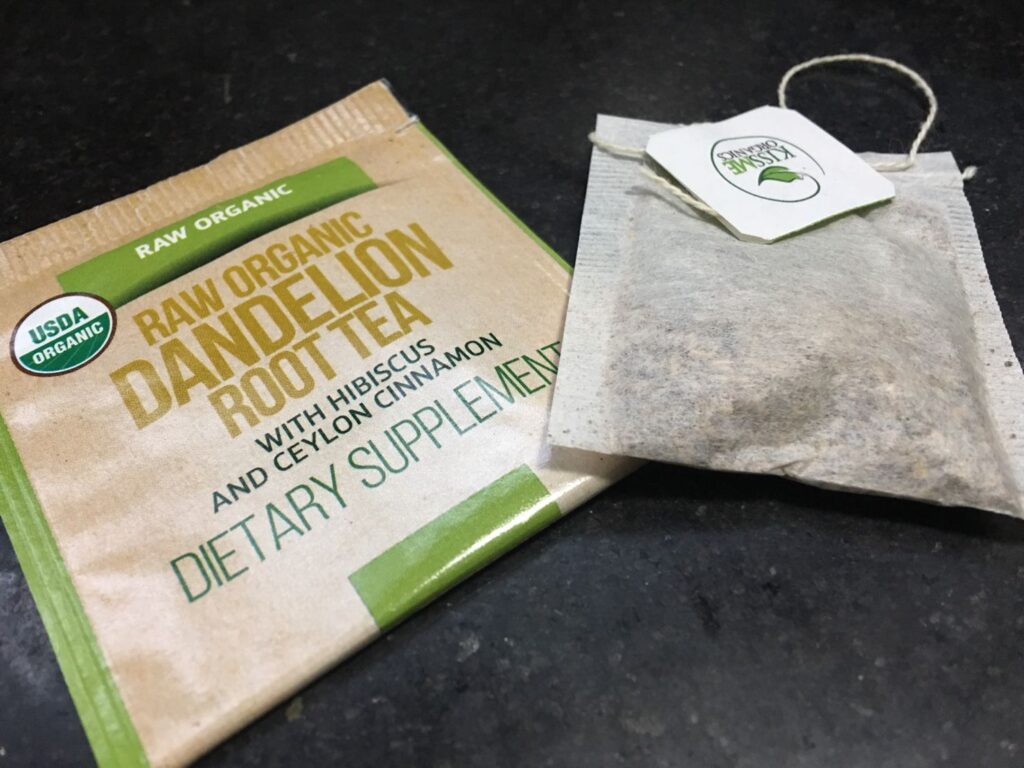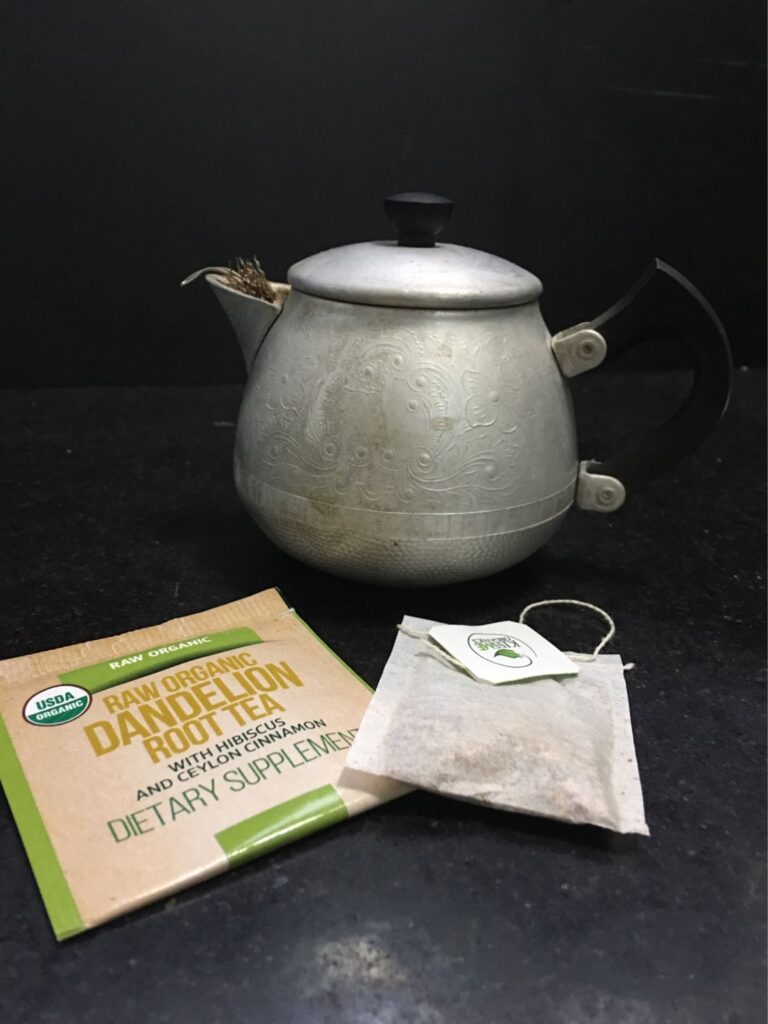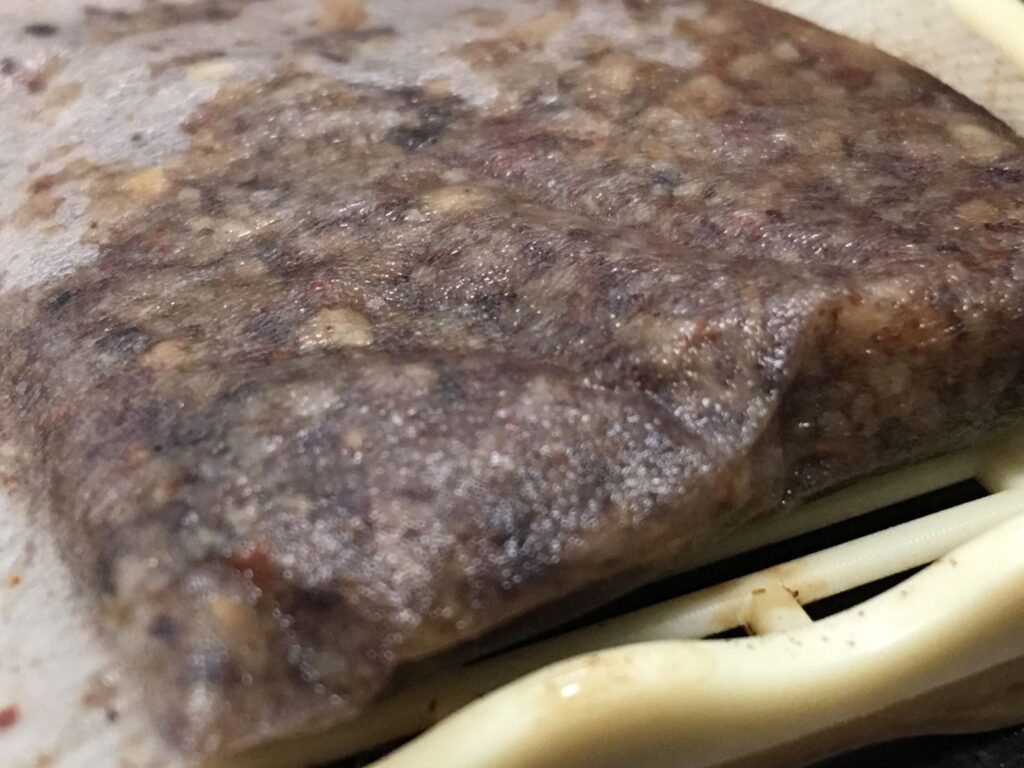C. sinensis var. jinggu big white leaf; from Autumn Tower in Erjinggu, Pu’er City, Yunnan Province, >950m; Spring, 2019, loose leaf, bud & 1-2 leaves, withered and dried at night (no exposure to sun), micro-fermentation process. #TodaysTea, #今天的茶, #JīnTiāndeChá, #Tea, #茶, #Chá.
The dry leaves are very large, white on one side, dark on the other, with long white furry buds and the occasional brown leaf. The smell sweet, fragrant, and kinda like candied fruits or boiled lollies. The wet leaves are a relatively uniform mix of green and brown, with a spicy, peppery, vegetal, and black cardamom scent.
3g of leaf was steeped in 150ml of water for 15-20sec.@85-95deg. The brewed liquor is a very pale yellow colour, with a vaguely citrus peel aroma. In the mouth it is creamy, syrupy, mildly tingling and spicy, with a sweet lingering finish, whilst the taste is bright, vibrant, light, hinting of sweet stone fruits and honeysuckle.
Legendary Story: Long ago, far, far away, there was a beautiful young Dai princess living in Xishuangbanna: kind and intelligent, she was named, “Seven Princess.” The friendly relations between the Dai and Bulang nationalities led to her marrying a handsome young Bulang man, and with her help, the Bulang people learned to plow, sow, and craft tea. She was later honoured as the Tea goddess of the Bulang people. Moonlight Beauty tea was chosen as a tribute to her, as the people agreed that this tea embodied the wisdom and beauty of Seven Princess.
This tea was supplied by Guyue Tea Co. (古月茶号) Special thanks to 鐗箪噯^O^ Yunnan tea.
